David Simon's Blog, page 14
March 31, 2017
Jesse’s Sons: Part 1
Sons, there were 8 of them and they knew their job. Their job was to shepherd the sheep. Eliab was the oldest, and therefore he was the first of the sons to shepherd the sheep. As the other sons got older they would also take care of the family’s crop of animals. Each son in order would go out with his father, and then his brothers to learn the family craft. They were like Abraham, Isaac, Jacob and his sons. The family was involved and learned the family trade.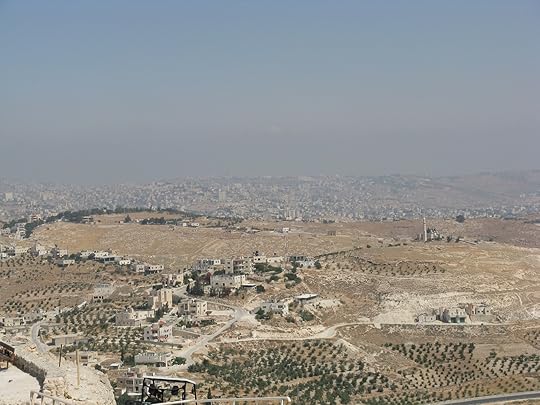 A view of the land near Bethlehem in the Judean highlandsIn Israel, in the years of the Judges, that meant starting early. When Eliab was but eight years old his father Jesse brought him to the fields of Bethlehem in order to learn the ways of the sheep and how to care for them. By ten he was ready to leave home for the summer and travel with the herd, for sheep can be hard on the pasture and must be moved from field to field so the land does not wear out. Jesse, as all good shepherds had mapped out a route and taught what he learned about life to his sons.
A view of the land near Bethlehem in the Judean highlandsIn Israel, in the years of the Judges, that meant starting early. When Eliab was but eight years old his father Jesse brought him to the fields of Bethlehem in order to learn the ways of the sheep and how to care for them. By ten he was ready to leave home for the summer and travel with the herd, for sheep can be hard on the pasture and must be moved from field to field so the land does not wear out. Jesse, as all good shepherds had mapped out a route and taught what he learned about life to his sons.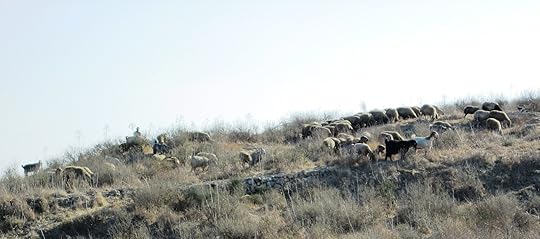 Caring for sheep on the slopes of JudeaJessie did not start out as a shepherd. His father and his grandfather were farmers who raised grain in the Bethlehem highlands. But each winter as a boy he would see sheep which grazed on his father’s land and on other pastures in the area throughout the winter. He watched the animals and talked to the shepherds. He would hear tales of adventure as the men would journey to the lowlands each year as they cared for their sheep. The son of Obed decided he wanted see to live a life of adventure like the stories he was hearing. He would spend nights with the shepherds to learn about the sheep, and then one day he told his father that this was the life for him. Farmers stay put and shepherds guide sheep. Jesse wanted to see the world and being a caretaker of sheep would enable him to earn a living and see the world.
Caring for sheep on the slopes of JudeaJessie did not start out as a shepherd. His father and his grandfather were farmers who raised grain in the Bethlehem highlands. But each winter as a boy he would see sheep which grazed on his father’s land and on other pastures in the area throughout the winter. He watched the animals and talked to the shepherds. He would hear tales of adventure as the men would journey to the lowlands each year as they cared for their sheep. The son of Obed decided he wanted see to live a life of adventure like the stories he was hearing. He would spend nights with the shepherds to learn about the sheep, and then one day he told his father that this was the life for him. Farmers stay put and shepherds guide sheep. Jesse wanted to see the world and being a caretaker of sheep would enable him to earn a living and see the world.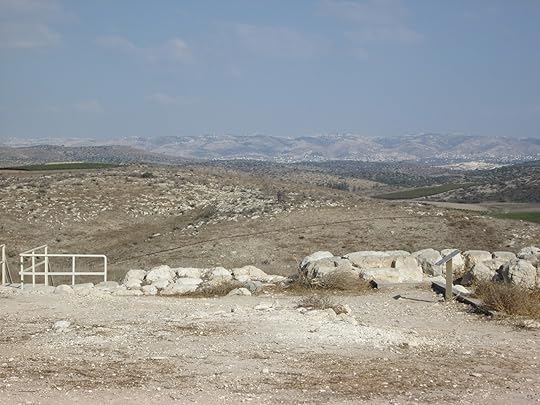 A view of the Judean highlands from the ShfelaEach spring Jesse and then his sons led sheep from the high fields of Bethlehem to find better pasture as the earth sprung to life below. He began by descending the steep slopes of the mountains to find what was growing and where the animals could graze. The annual rains would percolate down through the soil until it hit rock, and then it would surface through the multiple springs on the Judean slopes. The sheep would eat fresh food and drink clear water. Jesse, Eliab, and eventually his other sons would sleep in the cool of the caves which dotted the land.By the full moon of Passover it was Jesse’s goal to be down the mountain and into the low hills called Shfela. Some of the farmers had raised their first crop, barley, and the chaff and stubble left behind by the harvest made good fodder for sheep. This rich valley was an agricultural dreamland and would bring fatness to the family’s sheep so when the time came for them to be sold each sheep would bring a good price for the family to bring home before the autumn rains.
A view of the Judean highlands from the ShfelaEach spring Jesse and then his sons led sheep from the high fields of Bethlehem to find better pasture as the earth sprung to life below. He began by descending the steep slopes of the mountains to find what was growing and where the animals could graze. The annual rains would percolate down through the soil until it hit rock, and then it would surface through the multiple springs on the Judean slopes. The sheep would eat fresh food and drink clear water. Jesse, Eliab, and eventually his other sons would sleep in the cool of the caves which dotted the land.By the full moon of Passover it was Jesse’s goal to be down the mountain and into the low hills called Shfela. Some of the farmers had raised their first crop, barley, and the chaff and stubble left behind by the harvest made good fodder for sheep. This rich valley was an agricultural dreamland and would bring fatness to the family’s sheep so when the time came for them to be sold each sheep would bring a good price for the family to bring home before the autumn rains.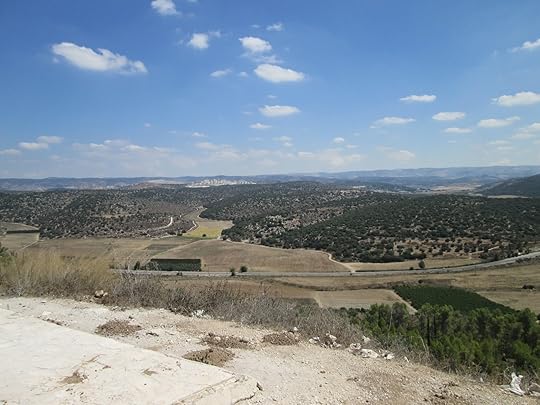 The green valleys near Azeka in IsraelIn time the stubble would give out, and it was time to move on. As the son of a farmer, and now a shepherd, Jesse had learned not to test the patience of farmers. If he was kind to the people who lived on the land and limited damage by his sheep the herd could move without trouble. But if his sheep damaged the earth he would suffer the consequences.Jesse taught his skills to his sons: To Eliab, to Abinadab, to Shimea, Nethanel, Raddai, Ozem and also to David. They each learned their lessons well as father taught son and son taught brothers and together they worked. The family made friends as they traveled and ate the fruits of the earth and saw the world which lay beyond the small highland community which they called home.By summer this shepherd family worked their way from the high pastures near Bethlehem, down the steep hills with caves, through the valleys of grain until they reached the plain of Sharon. And it was here they rested. The streams were plentiful and the grass was abundant, and so they slowed their pace to enjoy the place and fatten the sheep.
The green valleys near Azeka in IsraelIn time the stubble would give out, and it was time to move on. As the son of a farmer, and now a shepherd, Jesse had learned not to test the patience of farmers. If he was kind to the people who lived on the land and limited damage by his sheep the herd could move without trouble. But if his sheep damaged the earth he would suffer the consequences.Jesse taught his skills to his sons: To Eliab, to Abinadab, to Shimea, Nethanel, Raddai, Ozem and also to David. They each learned their lessons well as father taught son and son taught brothers and together they worked. The family made friends as they traveled and ate the fruits of the earth and saw the world which lay beyond the small highland community which they called home.By summer this shepherd family worked their way from the high pastures near Bethlehem, down the steep hills with caves, through the valleys of grain until they reached the plain of Sharon. And it was here they rested. The streams were plentiful and the grass was abundant, and so they slowed their pace to enjoy the place and fatten the sheep.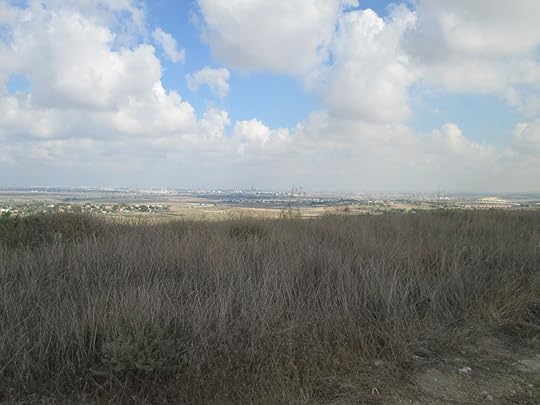 A view of the coast-land from Tel GezerBut they did not rest too much, for a shepherd must always move on, and in this coastal plain while the animals grazed the shepherds kept watch, for a strong people in walled cities inhabited this land. But Jesse and his sons did not fear the people, they only watched. They also sold sheep which they grew to the foreign people who occupied this land, for the people needed food, wool, milk and other products which the herd could provide. Jesse sold some sheep, and he thinned the flock, and by the time of the fruit it was time to move again. This time they would go up the hills and not down.The day’s work was like this: find a place to graze, guide the sheep, set a boundary and watch. Protect the flock from humans and predators, from eagles, snakes, bears, lions and people. Jesse and his sons worked hard to make sure their sheep grew fat in order to be sold. Each spring it was down the hill, each fall it was up the hill to return to Bethlehem before the fall rains. And then there was rest.
A view of the coast-land from Tel GezerBut they did not rest too much, for a shepherd must always move on, and in this coastal plain while the animals grazed the shepherds kept watch, for a strong people in walled cities inhabited this land. But Jesse and his sons did not fear the people, they only watched. They also sold sheep which they grew to the foreign people who occupied this land, for the people needed food, wool, milk and other products which the herd could provide. Jesse sold some sheep, and he thinned the flock, and by the time of the fruit it was time to move again. This time they would go up the hills and not down.The day’s work was like this: find a place to graze, guide the sheep, set a boundary and watch. Protect the flock from humans and predators, from eagles, snakes, bears, lions and people. Jesse and his sons worked hard to make sure their sheep grew fat in order to be sold. Each spring it was down the hill, each fall it was up the hill to return to Bethlehem before the fall rains. And then there was rest.
 A view of the land near Bethlehem in the Judean highlandsIn Israel, in the years of the Judges, that meant starting early. When Eliab was but eight years old his father Jesse brought him to the fields of Bethlehem in order to learn the ways of the sheep and how to care for them. By ten he was ready to leave home for the summer and travel with the herd, for sheep can be hard on the pasture and must be moved from field to field so the land does not wear out. Jesse, as all good shepherds had mapped out a route and taught what he learned about life to his sons.
A view of the land near Bethlehem in the Judean highlandsIn Israel, in the years of the Judges, that meant starting early. When Eliab was but eight years old his father Jesse brought him to the fields of Bethlehem in order to learn the ways of the sheep and how to care for them. By ten he was ready to leave home for the summer and travel with the herd, for sheep can be hard on the pasture and must be moved from field to field so the land does not wear out. Jesse, as all good shepherds had mapped out a route and taught what he learned about life to his sons. Caring for sheep on the slopes of JudeaJessie did not start out as a shepherd. His father and his grandfather were farmers who raised grain in the Bethlehem highlands. But each winter as a boy he would see sheep which grazed on his father’s land and on other pastures in the area throughout the winter. He watched the animals and talked to the shepherds. He would hear tales of adventure as the men would journey to the lowlands each year as they cared for their sheep. The son of Obed decided he wanted see to live a life of adventure like the stories he was hearing. He would spend nights with the shepherds to learn about the sheep, and then one day he told his father that this was the life for him. Farmers stay put and shepherds guide sheep. Jesse wanted to see the world and being a caretaker of sheep would enable him to earn a living and see the world.
Caring for sheep on the slopes of JudeaJessie did not start out as a shepherd. His father and his grandfather were farmers who raised grain in the Bethlehem highlands. But each winter as a boy he would see sheep which grazed on his father’s land and on other pastures in the area throughout the winter. He watched the animals and talked to the shepherds. He would hear tales of adventure as the men would journey to the lowlands each year as they cared for their sheep. The son of Obed decided he wanted see to live a life of adventure like the stories he was hearing. He would spend nights with the shepherds to learn about the sheep, and then one day he told his father that this was the life for him. Farmers stay put and shepherds guide sheep. Jesse wanted to see the world and being a caretaker of sheep would enable him to earn a living and see the world. A view of the Judean highlands from the ShfelaEach spring Jesse and then his sons led sheep from the high fields of Bethlehem to find better pasture as the earth sprung to life below. He began by descending the steep slopes of the mountains to find what was growing and where the animals could graze. The annual rains would percolate down through the soil until it hit rock, and then it would surface through the multiple springs on the Judean slopes. The sheep would eat fresh food and drink clear water. Jesse, Eliab, and eventually his other sons would sleep in the cool of the caves which dotted the land.By the full moon of Passover it was Jesse’s goal to be down the mountain and into the low hills called Shfela. Some of the farmers had raised their first crop, barley, and the chaff and stubble left behind by the harvest made good fodder for sheep. This rich valley was an agricultural dreamland and would bring fatness to the family’s sheep so when the time came for them to be sold each sheep would bring a good price for the family to bring home before the autumn rains.
A view of the Judean highlands from the ShfelaEach spring Jesse and then his sons led sheep from the high fields of Bethlehem to find better pasture as the earth sprung to life below. He began by descending the steep slopes of the mountains to find what was growing and where the animals could graze. The annual rains would percolate down through the soil until it hit rock, and then it would surface through the multiple springs on the Judean slopes. The sheep would eat fresh food and drink clear water. Jesse, Eliab, and eventually his other sons would sleep in the cool of the caves which dotted the land.By the full moon of Passover it was Jesse’s goal to be down the mountain and into the low hills called Shfela. Some of the farmers had raised their first crop, barley, and the chaff and stubble left behind by the harvest made good fodder for sheep. This rich valley was an agricultural dreamland and would bring fatness to the family’s sheep so when the time came for them to be sold each sheep would bring a good price for the family to bring home before the autumn rains. The green valleys near Azeka in IsraelIn time the stubble would give out, and it was time to move on. As the son of a farmer, and now a shepherd, Jesse had learned not to test the patience of farmers. If he was kind to the people who lived on the land and limited damage by his sheep the herd could move without trouble. But if his sheep damaged the earth he would suffer the consequences.Jesse taught his skills to his sons: To Eliab, to Abinadab, to Shimea, Nethanel, Raddai, Ozem and also to David. They each learned their lessons well as father taught son and son taught brothers and together they worked. The family made friends as they traveled and ate the fruits of the earth and saw the world which lay beyond the small highland community which they called home.By summer this shepherd family worked their way from the high pastures near Bethlehem, down the steep hills with caves, through the valleys of grain until they reached the plain of Sharon. And it was here they rested. The streams were plentiful and the grass was abundant, and so they slowed their pace to enjoy the place and fatten the sheep.
The green valleys near Azeka in IsraelIn time the stubble would give out, and it was time to move on. As the son of a farmer, and now a shepherd, Jesse had learned not to test the patience of farmers. If he was kind to the people who lived on the land and limited damage by his sheep the herd could move without trouble. But if his sheep damaged the earth he would suffer the consequences.Jesse taught his skills to his sons: To Eliab, to Abinadab, to Shimea, Nethanel, Raddai, Ozem and also to David. They each learned their lessons well as father taught son and son taught brothers and together they worked. The family made friends as they traveled and ate the fruits of the earth and saw the world which lay beyond the small highland community which they called home.By summer this shepherd family worked their way from the high pastures near Bethlehem, down the steep hills with caves, through the valleys of grain until they reached the plain of Sharon. And it was here they rested. The streams were plentiful and the grass was abundant, and so they slowed their pace to enjoy the place and fatten the sheep. A view of the coast-land from Tel GezerBut they did not rest too much, for a shepherd must always move on, and in this coastal plain while the animals grazed the shepherds kept watch, for a strong people in walled cities inhabited this land. But Jesse and his sons did not fear the people, they only watched. They also sold sheep which they grew to the foreign people who occupied this land, for the people needed food, wool, milk and other products which the herd could provide. Jesse sold some sheep, and he thinned the flock, and by the time of the fruit it was time to move again. This time they would go up the hills and not down.The day’s work was like this: find a place to graze, guide the sheep, set a boundary and watch. Protect the flock from humans and predators, from eagles, snakes, bears, lions and people. Jesse and his sons worked hard to make sure their sheep grew fat in order to be sold. Each spring it was down the hill, each fall it was up the hill to return to Bethlehem before the fall rains. And then there was rest.
A view of the coast-land from Tel GezerBut they did not rest too much, for a shepherd must always move on, and in this coastal plain while the animals grazed the shepherds kept watch, for a strong people in walled cities inhabited this land. But Jesse and his sons did not fear the people, they only watched. They also sold sheep which they grew to the foreign people who occupied this land, for the people needed food, wool, milk and other products which the herd could provide. Jesse sold some sheep, and he thinned the flock, and by the time of the fruit it was time to move again. This time they would go up the hills and not down.The day’s work was like this: find a place to graze, guide the sheep, set a boundary and watch. Protect the flock from humans and predators, from eagles, snakes, bears, lions and people. Jesse and his sons worked hard to make sure their sheep grew fat in order to be sold. Each spring it was down the hill, each fall it was up the hill to return to Bethlehem before the fall rains. And then there was rest.
Published on March 31, 2017 04:43
March 29, 2017
Jesus in the Spring
As we look out our windows in North Carolina we see that Spring has arrived. The winter chill is almost gone and flowers are beginning to come out of the ground. I love the daffodils and forsythia with their brilliant yellow color. I anticipate the tulips, azelia, fruit trees, redbud and dogwood trees. Portions of my garden are in and the entire world is coming alive around us.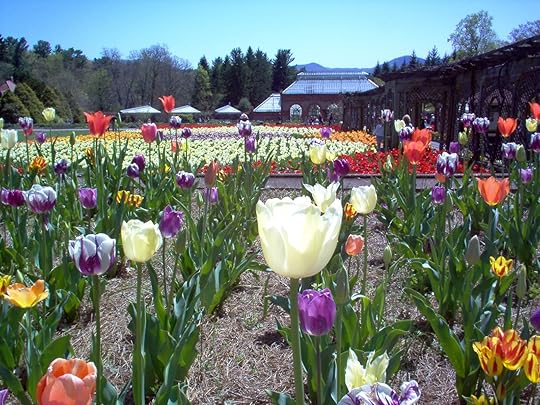 Tulips in the spring garden at the Biltmore EstateAs I look out my window I think about Jesus and his disciples in the Spring. The month of March is generally near the end of the rainy season. Fields would be at their greenest and many flowers would be blooming. The barley harvest would be anticipated or occurring and farmers would be looking forward to wheat which comes in just after Passover.
Tulips in the spring garden at the Biltmore EstateAs I look out my window I think about Jesus and his disciples in the Spring. The month of March is generally near the end of the rainy season. Fields would be at their greenest and many flowers would be blooming. The barley harvest would be anticipated or occurring and farmers would be looking forward to wheat which comes in just after Passover.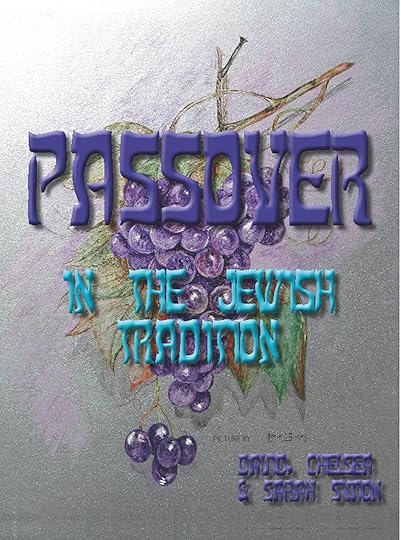 Our Passover Haggadah which explains the entire SederThe Spring festival, Passover is one of the most mentioned holidays in the BIble. Passover is mentioned multiple times in the Gospels and forms the background of many other Old Testament and New Testament passages. The Lord’s Supper was a Passover meal and the early church used these as a pattern for other meals. Jesus is considered the Passover Lamb whose blood was placed on the doorposts.
Our Passover Haggadah which explains the entire SederThe Spring festival, Passover is one of the most mentioned holidays in the BIble. Passover is mentioned multiple times in the Gospels and forms the background of many other Old Testament and New Testament passages. The Lord’s Supper was a Passover meal and the early church used these as a pattern for other meals. Jesus is considered the Passover Lamb whose blood was placed on the doorposts.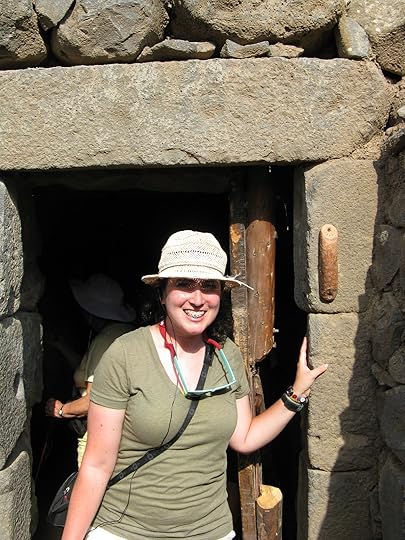 Sarah at a Doorway in ancient Katzrin, IsraelThe only reference we have of Jesus during his childhood was during the Passover. Luke says, “Every year Jesus’ parents went to Jerusalem for the Festival of the Passover. When he was twelve years old, they went up to the festival, according to the custom.” (Luke 2:41-42) We know that Joseph sacrificed a lamb and Mary prepared a feast for the family. Other family members or friends probably celebrated Passover with Jesus. These Passovers turned into memorable events.
Sarah at a Doorway in ancient Katzrin, IsraelThe only reference we have of Jesus during his childhood was during the Passover. Luke says, “Every year Jesus’ parents went to Jerusalem for the Festival of the Passover. When he was twelve years old, they went up to the festival, according to the custom.” (Luke 2:41-42) We know that Joseph sacrificed a lamb and Mary prepared a feast for the family. Other family members or friends probably celebrated Passover with Jesus. These Passovers turned into memorable events.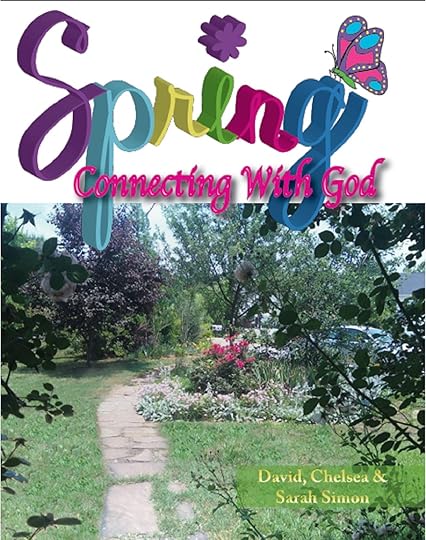 Our Spring book which shares Passover through the BibleWhen Jesus’ parents left Jerusalem at the end of the Passover recorded in Luke 2, Jesus remained behind. Joseph and Mary traveled for a day before they realized Jesus was not with them (the reason can be found in Spring: Connecting WIth God), so they returned to Jerusalem and searched for three days to find their son. They found him “sitting among the teachers, listening to them and asking them questions.” This is like the wise son of the taught about in the Passover Haggadah.
Our Spring book which shares Passover through the BibleWhen Jesus’ parents left Jerusalem at the end of the Passover recorded in Luke 2, Jesus remained behind. Joseph and Mary traveled for a day before they realized Jesus was not with them (the reason can be found in Spring: Connecting WIth God), so they returned to Jerusalem and searched for three days to find their son. They found him “sitting among the teachers, listening to them and asking them questions.” This is like the wise son of the taught about in the Passover Haggadah. 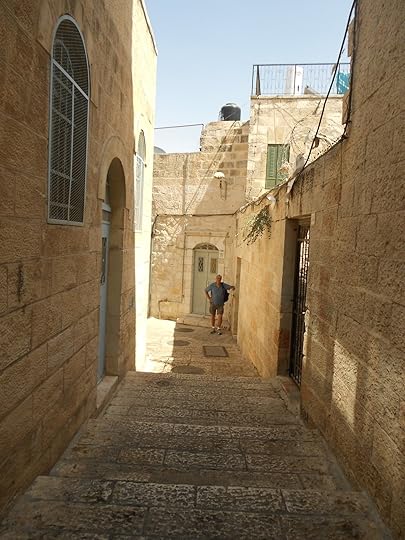 A typical street in JerusalemJohn recorded another warm spring night fifteen years later when Jesus once again came to Jerusalem for Passover. John records on that night Nicodemus came to ask Jesus a question. Jesus, looking out into the spring night said, “You must be born again.” Nicodemus asked, “How can someone be born when they are old?” Jesus replied, “Very truly I tell you, no one can enter the kingdom of God unless they are born of water and the Spirit. Flesh gives birth to flesh, but the Spirit gives birth to spirit. You should not be surprised at my saying, ‘You must be born again.’ The wind blows wherever it pleases. You hear its sound, but you cannot tell where it comes from or where it is going. So it is with everyone born of the Spirit.”
A typical street in JerusalemJohn recorded another warm spring night fifteen years later when Jesus once again came to Jerusalem for Passover. John records on that night Nicodemus came to ask Jesus a question. Jesus, looking out into the spring night said, “You must be born again.” Nicodemus asked, “How can someone be born when they are old?” Jesus replied, “Very truly I tell you, no one can enter the kingdom of God unless they are born of water and the Spirit. Flesh gives birth to flesh, but the Spirit gives birth to spirit. You should not be surprised at my saying, ‘You must be born again.’ The wind blows wherever it pleases. You hear its sound, but you cannot tell where it comes from or where it is going. So it is with everyone born of the Spirit.”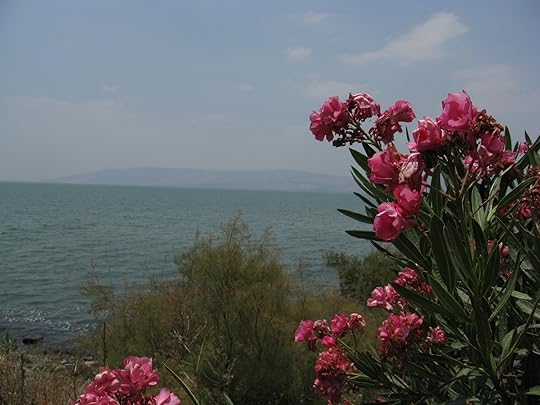 The Sea of Galilee from CapernaumThe next year, Jesus’ second year of ministry, he celebrated Passover at the Sea of Galilee because it was too dangerous to go into Jerusalem. People gathered to hear the great teacher, and again there were questions. They asked, “What must we do to do the works God requires?” and “What sign then will you give that we may see it and believe you?” and other questions. Jesus explained to them he was the bread which came down from heaven. On that Passover, in all four Gospels, it is recorded that Jesus fed 5,000 people.
The Sea of Galilee from CapernaumThe next year, Jesus’ second year of ministry, he celebrated Passover at the Sea of Galilee because it was too dangerous to go into Jerusalem. People gathered to hear the great teacher, and again there were questions. They asked, “What must we do to do the works God requires?” and “What sign then will you give that we may see it and believe you?” and other questions. Jesus explained to them he was the bread which came down from heaven. On that Passover, in all four Gospels, it is recorded that Jesus fed 5,000 people.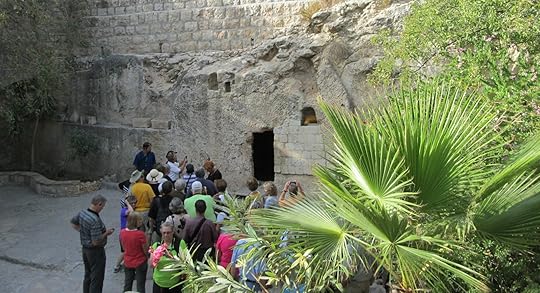 The Garden Tomb in JerusalemThe next year, in Jesus’ third year of ministry and on his final night he once again celebrated Passover. It was spring.
The Garden Tomb in JerusalemThe next year, in Jesus’ third year of ministry and on his final night he once again celebrated Passover. It was spring.
Spring is a great time to celebrate the festival of Passover. The book A Christian Passover in the Jewish Tradition can guide your family or Sunday School class in this celebration. If you would like someone to lead a Christian Passover for you, please contact me.
 Tulips in the spring garden at the Biltmore EstateAs I look out my window I think about Jesus and his disciples in the Spring. The month of March is generally near the end of the rainy season. Fields would be at their greenest and many flowers would be blooming. The barley harvest would be anticipated or occurring and farmers would be looking forward to wheat which comes in just after Passover.
Tulips in the spring garden at the Biltmore EstateAs I look out my window I think about Jesus and his disciples in the Spring. The month of March is generally near the end of the rainy season. Fields would be at their greenest and many flowers would be blooming. The barley harvest would be anticipated or occurring and farmers would be looking forward to wheat which comes in just after Passover. Our Passover Haggadah which explains the entire SederThe Spring festival, Passover is one of the most mentioned holidays in the BIble. Passover is mentioned multiple times in the Gospels and forms the background of many other Old Testament and New Testament passages. The Lord’s Supper was a Passover meal and the early church used these as a pattern for other meals. Jesus is considered the Passover Lamb whose blood was placed on the doorposts.
Our Passover Haggadah which explains the entire SederThe Spring festival, Passover is one of the most mentioned holidays in the BIble. Passover is mentioned multiple times in the Gospels and forms the background of many other Old Testament and New Testament passages. The Lord’s Supper was a Passover meal and the early church used these as a pattern for other meals. Jesus is considered the Passover Lamb whose blood was placed on the doorposts. Sarah at a Doorway in ancient Katzrin, IsraelThe only reference we have of Jesus during his childhood was during the Passover. Luke says, “Every year Jesus’ parents went to Jerusalem for the Festival of the Passover. When he was twelve years old, they went up to the festival, according to the custom.” (Luke 2:41-42) We know that Joseph sacrificed a lamb and Mary prepared a feast for the family. Other family members or friends probably celebrated Passover with Jesus. These Passovers turned into memorable events.
Sarah at a Doorway in ancient Katzrin, IsraelThe only reference we have of Jesus during his childhood was during the Passover. Luke says, “Every year Jesus’ parents went to Jerusalem for the Festival of the Passover. When he was twelve years old, they went up to the festival, according to the custom.” (Luke 2:41-42) We know that Joseph sacrificed a lamb and Mary prepared a feast for the family. Other family members or friends probably celebrated Passover with Jesus. These Passovers turned into memorable events. Our Spring book which shares Passover through the BibleWhen Jesus’ parents left Jerusalem at the end of the Passover recorded in Luke 2, Jesus remained behind. Joseph and Mary traveled for a day before they realized Jesus was not with them (the reason can be found in Spring: Connecting WIth God), so they returned to Jerusalem and searched for three days to find their son. They found him “sitting among the teachers, listening to them and asking them questions.” This is like the wise son of the taught about in the Passover Haggadah.
Our Spring book which shares Passover through the BibleWhen Jesus’ parents left Jerusalem at the end of the Passover recorded in Luke 2, Jesus remained behind. Joseph and Mary traveled for a day before they realized Jesus was not with them (the reason can be found in Spring: Connecting WIth God), so they returned to Jerusalem and searched for three days to find their son. They found him “sitting among the teachers, listening to them and asking them questions.” This is like the wise son of the taught about in the Passover Haggadah.  A typical street in JerusalemJohn recorded another warm spring night fifteen years later when Jesus once again came to Jerusalem for Passover. John records on that night Nicodemus came to ask Jesus a question. Jesus, looking out into the spring night said, “You must be born again.” Nicodemus asked, “How can someone be born when they are old?” Jesus replied, “Very truly I tell you, no one can enter the kingdom of God unless they are born of water and the Spirit. Flesh gives birth to flesh, but the Spirit gives birth to spirit. You should not be surprised at my saying, ‘You must be born again.’ The wind blows wherever it pleases. You hear its sound, but you cannot tell where it comes from or where it is going. So it is with everyone born of the Spirit.”
A typical street in JerusalemJohn recorded another warm spring night fifteen years later when Jesus once again came to Jerusalem for Passover. John records on that night Nicodemus came to ask Jesus a question. Jesus, looking out into the spring night said, “You must be born again.” Nicodemus asked, “How can someone be born when they are old?” Jesus replied, “Very truly I tell you, no one can enter the kingdom of God unless they are born of water and the Spirit. Flesh gives birth to flesh, but the Spirit gives birth to spirit. You should not be surprised at my saying, ‘You must be born again.’ The wind blows wherever it pleases. You hear its sound, but you cannot tell where it comes from or where it is going. So it is with everyone born of the Spirit.” The Sea of Galilee from CapernaumThe next year, Jesus’ second year of ministry, he celebrated Passover at the Sea of Galilee because it was too dangerous to go into Jerusalem. People gathered to hear the great teacher, and again there were questions. They asked, “What must we do to do the works God requires?” and “What sign then will you give that we may see it and believe you?” and other questions. Jesus explained to them he was the bread which came down from heaven. On that Passover, in all four Gospels, it is recorded that Jesus fed 5,000 people.
The Sea of Galilee from CapernaumThe next year, Jesus’ second year of ministry, he celebrated Passover at the Sea of Galilee because it was too dangerous to go into Jerusalem. People gathered to hear the great teacher, and again there were questions. They asked, “What must we do to do the works God requires?” and “What sign then will you give that we may see it and believe you?” and other questions. Jesus explained to them he was the bread which came down from heaven. On that Passover, in all four Gospels, it is recorded that Jesus fed 5,000 people. The Garden Tomb in JerusalemThe next year, in Jesus’ third year of ministry and on his final night he once again celebrated Passover. It was spring.
The Garden Tomb in JerusalemThe next year, in Jesus’ third year of ministry and on his final night he once again celebrated Passover. It was spring. Spring is a great time to celebrate the festival of Passover. The book A Christian Passover in the Jewish Tradition can guide your family or Sunday School class in this celebration. If you would like someone to lead a Christian Passover for you, please contact me.
Published on March 29, 2017 03:30
March 27, 2017
New things in Ancient Lachish
During our 14 day trip to the Holy Land we will be visiting ancient sites and more modern sites in Israel. Sometimes primitive sites and modern conveniences exist together. The historic Tel Lachish is a historic area which has been modernized.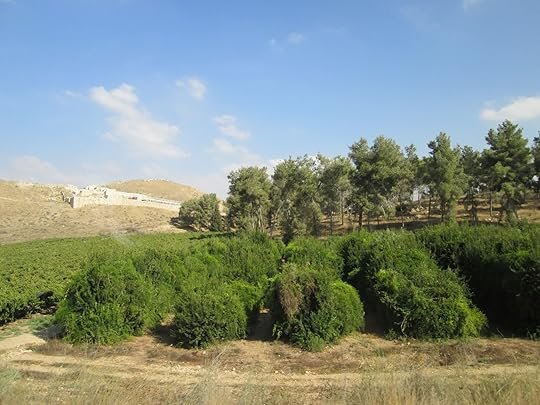 When I first visited this site in 2014, we could not enter through the city gates because of a major construction project. Ramps were being installed for the disabled so they could easily approach the site without steep inclines or rough terrain.
When I first visited this site in 2014, we could not enter through the city gates because of a major construction project. Ramps were being installed for the disabled so they could easily approach the site without steep inclines or rough terrain.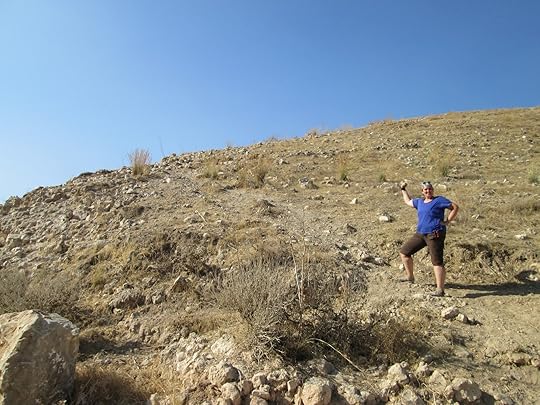 Our group could not enter through the gate, and we were forced to find another way to the top of the mound. The most obvious approach was to climb the high hill which still covered some of the walls.
Our group could not enter through the gate, and we were forced to find another way to the top of the mound. The most obvious approach was to climb the high hill which still covered some of the walls.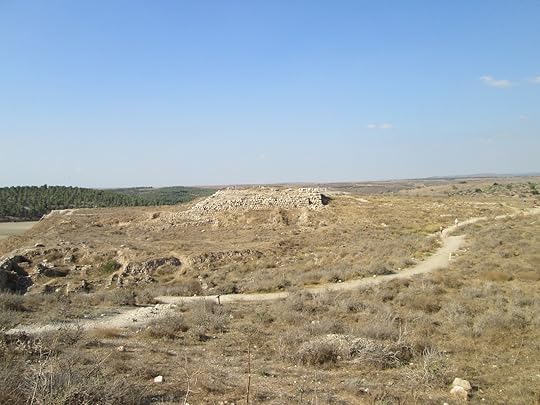 The hill was very steep, and we ascended with great difficulty. But we managed and helped one another to the top of the site. From the top we looked down on the entire area which was once the city.
The hill was very steep, and we ascended with great difficulty. But we managed and helped one another to the top of the site. From the top we looked down on the entire area which was once the city.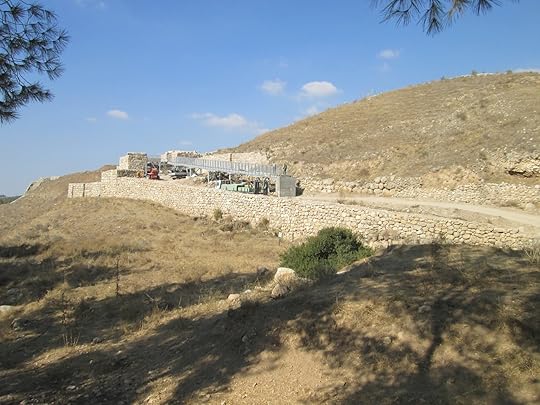 Lachish was a major historic site dating back to the Neolithic period (5500–4500 BC). It is first mentioned in the Amarna letters of Pharaoh Amenhotep III dating to the fourteenth century BC. The city was destroyed several times, but because of its location, it became a major administrative center during the reign of kings Asa and Jehoshaphat with thick walls for protection.
Lachish was a major historic site dating back to the Neolithic period (5500–4500 BC). It is first mentioned in the Amarna letters of Pharaoh Amenhotep III dating to the fourteenth century BC. The city was destroyed several times, but because of its location, it became a major administrative center during the reign of kings Asa and Jehoshaphat with thick walls for protection.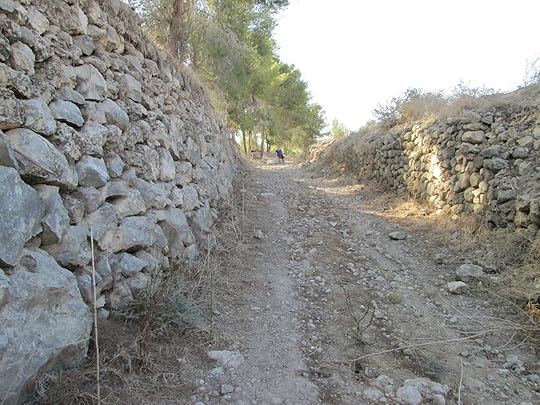 Sennacherib and Nebuchadnezzar were able to overcome the walls and conquer the city, which was abandoned not long after in 587 BC.
Sennacherib and Nebuchadnezzar were able to overcome the walls and conquer the city, which was abandoned not long after in 587 BC. 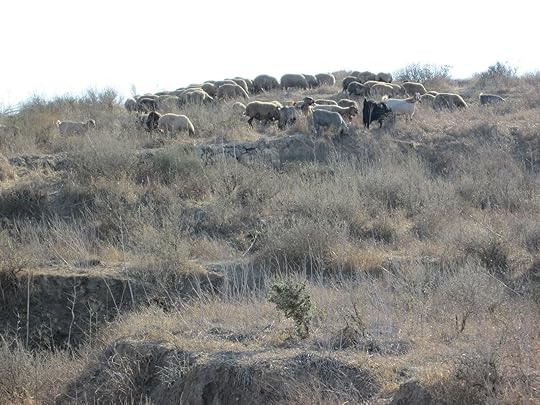 The city is inhabited by sheep and shepherds today. The shepherd and sheep pictured in the heading of week three of my book Advent Journeys was taken at Lachish. (I thought about David the shepherd as I took the picture.) Lachish is located (by air) twenty-two miles from Bethlehem.
The city is inhabited by sheep and shepherds today. The shepherd and sheep pictured in the heading of week three of my book Advent Journeys was taken at Lachish. (I thought about David the shepherd as I took the picture.) Lachish is located (by air) twenty-two miles from Bethlehem. 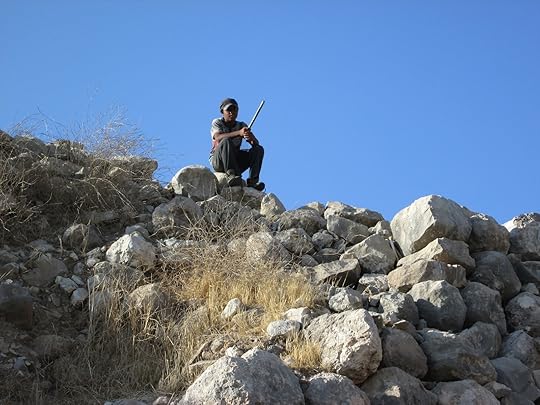 I hope you can join us on our 14 day trip to the Holy Land.To see the full agenda or to sign up, click the links. You will be rewarded through personal discoveries and experiences by going on this journey.
I hope you can join us on our 14 day trip to the Holy Land.To see the full agenda or to sign up, click the links. You will be rewarded through personal discoveries and experiences by going on this journey.
 When I first visited this site in 2014, we could not enter through the city gates because of a major construction project. Ramps were being installed for the disabled so they could easily approach the site without steep inclines or rough terrain.
When I first visited this site in 2014, we could not enter through the city gates because of a major construction project. Ramps were being installed for the disabled so they could easily approach the site without steep inclines or rough terrain. Our group could not enter through the gate, and we were forced to find another way to the top of the mound. The most obvious approach was to climb the high hill which still covered some of the walls.
Our group could not enter through the gate, and we were forced to find another way to the top of the mound. The most obvious approach was to climb the high hill which still covered some of the walls. The hill was very steep, and we ascended with great difficulty. But we managed and helped one another to the top of the site. From the top we looked down on the entire area which was once the city.
The hill was very steep, and we ascended with great difficulty. But we managed and helped one another to the top of the site. From the top we looked down on the entire area which was once the city. Lachish was a major historic site dating back to the Neolithic period (5500–4500 BC). It is first mentioned in the Amarna letters of Pharaoh Amenhotep III dating to the fourteenth century BC. The city was destroyed several times, but because of its location, it became a major administrative center during the reign of kings Asa and Jehoshaphat with thick walls for protection.
Lachish was a major historic site dating back to the Neolithic period (5500–4500 BC). It is first mentioned in the Amarna letters of Pharaoh Amenhotep III dating to the fourteenth century BC. The city was destroyed several times, but because of its location, it became a major administrative center during the reign of kings Asa and Jehoshaphat with thick walls for protection. Sennacherib and Nebuchadnezzar were able to overcome the walls and conquer the city, which was abandoned not long after in 587 BC.
Sennacherib and Nebuchadnezzar were able to overcome the walls and conquer the city, which was abandoned not long after in 587 BC.  The city is inhabited by sheep and shepherds today. The shepherd and sheep pictured in the heading of week three of my book Advent Journeys was taken at Lachish. (I thought about David the shepherd as I took the picture.) Lachish is located (by air) twenty-two miles from Bethlehem.
The city is inhabited by sheep and shepherds today. The shepherd and sheep pictured in the heading of week three of my book Advent Journeys was taken at Lachish. (I thought about David the shepherd as I took the picture.) Lachish is located (by air) twenty-two miles from Bethlehem.  I hope you can join us on our 14 day trip to the Holy Land.To see the full agenda or to sign up, click the links. You will be rewarded through personal discoveries and experiences by going on this journey.
I hope you can join us on our 14 day trip to the Holy Land.To see the full agenda or to sign up, click the links. You will be rewarded through personal discoveries and experiences by going on this journey.
Published on March 27, 2017 03:30
March 22, 2017
Maresha and Bell Caves
The land of Israel is filled with natural beauty. One of the sites we will visit on our 14 day trip to the Holy Land in May 2018 are the bell caves at Bet Govrin. These huge caves are the result of underground quarries during the Byzantine and early Muslim periods. Over the years erosion has created bell shaped interiors with walls from the chalk compound that makes up the caves.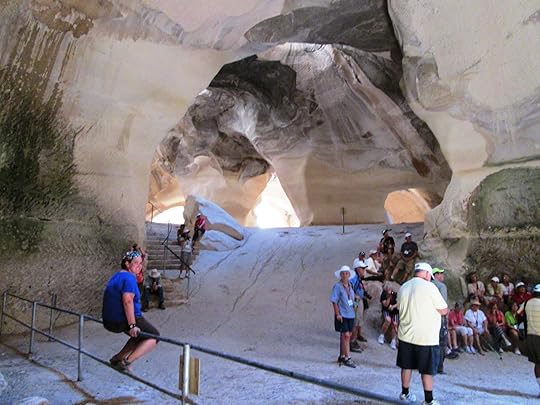 The Bell Caves are located near the older town of Maresha built by Rehoboam (2 Chronicles 11:5-8). The area was attacked by Egyptian Pharaohs Shishak and Osorkon. The Madaba Map records Maresha as the home of Micah the prophet.After the assault by Nebuchadnezzar Edomites moved into abandoned cities in the region. The region became known by the Greek term Idumenea. John Hyrcanus conquered the region in 112 BC and forced Judaism upon the residents. King Herod the Great, who was a son of a converted Idumaean consolidated power and showed favor to Maresha.
The Bell Caves are located near the older town of Maresha built by Rehoboam (2 Chronicles 11:5-8). The area was attacked by Egyptian Pharaohs Shishak and Osorkon. The Madaba Map records Maresha as the home of Micah the prophet.After the assault by Nebuchadnezzar Edomites moved into abandoned cities in the region. The region became known by the Greek term Idumenea. John Hyrcanus conquered the region in 112 BC and forced Judaism upon the residents. King Herod the Great, who was a son of a converted Idumaean consolidated power and showed favor to Maresha.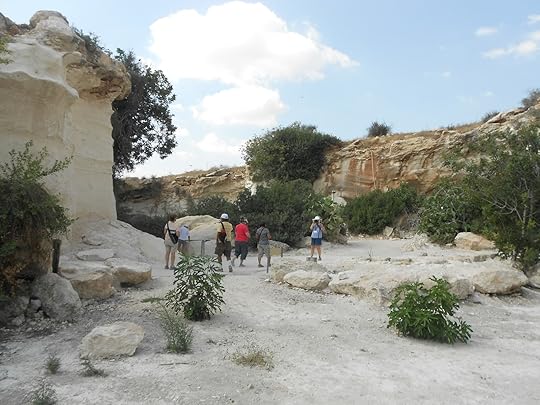 During the New Testament era Maresha was able to capitalize on its relationship with King Herod and his relationship with the High Priests of the Temple, especially his relationship with Simon Boethrus. Dove columbarium caves were excavated and raising these birds for food and Temple sacrifice became a major industry. The columbariums are filled with thousands of roosts so the birds can rest inside and find food outside. We will walk through a large roosting cave while we are on our trip to the Holy Land.
During the New Testament era Maresha was able to capitalize on its relationship with King Herod and his relationship with the High Priests of the Temple, especially his relationship with Simon Boethrus. Dove columbarium caves were excavated and raising these birds for food and Temple sacrifice became a major industry. The columbariums are filled with thousands of roosts so the birds can rest inside and find food outside. We will walk through a large roosting cave while we are on our trip to the Holy Land. 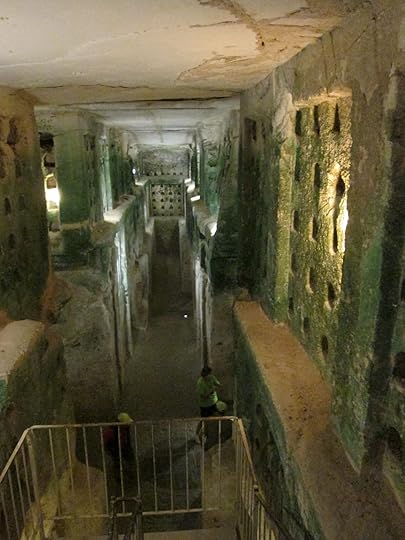 Bet Guvrin-Maresha National Park is filled with history and interesting sights. In addition to the Bell Caves and Columbarium Cave there are olive press caves, bathtub caves, Sidonian caves, and a Maze Cave from the Hellenistic period. Caves have been carved and used in the region from prehistoric times to the present. Caves were used as a hiding place for troops commanded by Polish General Wladslav Anders during World War II. There are many ancient housing areas including Tel Maresha, Eleutheropolis and Bet Guvrin. Kibbutz Bet Guvrin is located just outside the National Park.
Bet Guvrin-Maresha National Park is filled with history and interesting sights. In addition to the Bell Caves and Columbarium Cave there are olive press caves, bathtub caves, Sidonian caves, and a Maze Cave from the Hellenistic period. Caves have been carved and used in the region from prehistoric times to the present. Caves were used as a hiding place for troops commanded by Polish General Wladslav Anders during World War II. There are many ancient housing areas including Tel Maresha, Eleutheropolis and Bet Guvrin. Kibbutz Bet Guvrin is located just outside the National Park.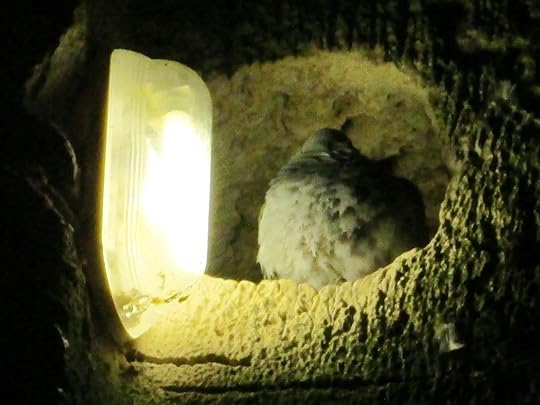 Maresha is in the Judean Hills and the Shephelah region of Israel. It is in the Guvrin Valley at its intersection with what is known as the Parallel Road. Guvrin Valley, also known as Wady el-`Afranj leads from Ashdod to Hebron.
Maresha is in the Judean Hills and the Shephelah region of Israel. It is in the Guvrin Valley at its intersection with what is known as the Parallel Road. Guvrin Valley, also known as Wady el-`Afranj leads from Ashdod to Hebron.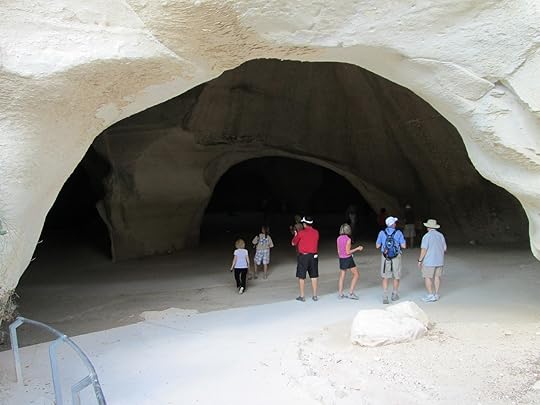
As we travel through the hill country and through the various valleys we will gain an understanding of this region’s importance in both Biblical and modern eras.
 The Bell Caves are located near the older town of Maresha built by Rehoboam (2 Chronicles 11:5-8). The area was attacked by Egyptian Pharaohs Shishak and Osorkon. The Madaba Map records Maresha as the home of Micah the prophet.After the assault by Nebuchadnezzar Edomites moved into abandoned cities in the region. The region became known by the Greek term Idumenea. John Hyrcanus conquered the region in 112 BC and forced Judaism upon the residents. King Herod the Great, who was a son of a converted Idumaean consolidated power and showed favor to Maresha.
The Bell Caves are located near the older town of Maresha built by Rehoboam (2 Chronicles 11:5-8). The area was attacked by Egyptian Pharaohs Shishak and Osorkon. The Madaba Map records Maresha as the home of Micah the prophet.After the assault by Nebuchadnezzar Edomites moved into abandoned cities in the region. The region became known by the Greek term Idumenea. John Hyrcanus conquered the region in 112 BC and forced Judaism upon the residents. King Herod the Great, who was a son of a converted Idumaean consolidated power and showed favor to Maresha. During the New Testament era Maresha was able to capitalize on its relationship with King Herod and his relationship with the High Priests of the Temple, especially his relationship with Simon Boethrus. Dove columbarium caves were excavated and raising these birds for food and Temple sacrifice became a major industry. The columbariums are filled with thousands of roosts so the birds can rest inside and find food outside. We will walk through a large roosting cave while we are on our trip to the Holy Land.
During the New Testament era Maresha was able to capitalize on its relationship with King Herod and his relationship with the High Priests of the Temple, especially his relationship with Simon Boethrus. Dove columbarium caves were excavated and raising these birds for food and Temple sacrifice became a major industry. The columbariums are filled with thousands of roosts so the birds can rest inside and find food outside. We will walk through a large roosting cave while we are on our trip to the Holy Land.  Bet Guvrin-Maresha National Park is filled with history and interesting sights. In addition to the Bell Caves and Columbarium Cave there are olive press caves, bathtub caves, Sidonian caves, and a Maze Cave from the Hellenistic period. Caves have been carved and used in the region from prehistoric times to the present. Caves were used as a hiding place for troops commanded by Polish General Wladslav Anders during World War II. There are many ancient housing areas including Tel Maresha, Eleutheropolis and Bet Guvrin. Kibbutz Bet Guvrin is located just outside the National Park.
Bet Guvrin-Maresha National Park is filled with history and interesting sights. In addition to the Bell Caves and Columbarium Cave there are olive press caves, bathtub caves, Sidonian caves, and a Maze Cave from the Hellenistic period. Caves have been carved and used in the region from prehistoric times to the present. Caves were used as a hiding place for troops commanded by Polish General Wladslav Anders during World War II. There are many ancient housing areas including Tel Maresha, Eleutheropolis and Bet Guvrin. Kibbutz Bet Guvrin is located just outside the National Park. Maresha is in the Judean Hills and the Shephelah region of Israel. It is in the Guvrin Valley at its intersection with what is known as the Parallel Road. Guvrin Valley, also known as Wady el-`Afranj leads from Ashdod to Hebron.
Maresha is in the Judean Hills and the Shephelah region of Israel. It is in the Guvrin Valley at its intersection with what is known as the Parallel Road. Guvrin Valley, also known as Wady el-`Afranj leads from Ashdod to Hebron.
As we travel through the hill country and through the various valleys we will gain an understanding of this region’s importance in both Biblical and modern eras.
Published on March 22, 2017 03:30
March 17, 2017
Passover Glue
In today’s world Passover is perhaps the most celebrated observance of the Jewish people - and this is not surprising. The celebration takes place in the home, extended family is included, and the meal is a banquet. The worship element of Passover is so familiar to Jews that they can quote lines by heart, and some families have a lot of fun ad-libbing or adding their own twist to an old story. Over the years each family builds their own traditions, making Passover an occasion to which everyone looks forward.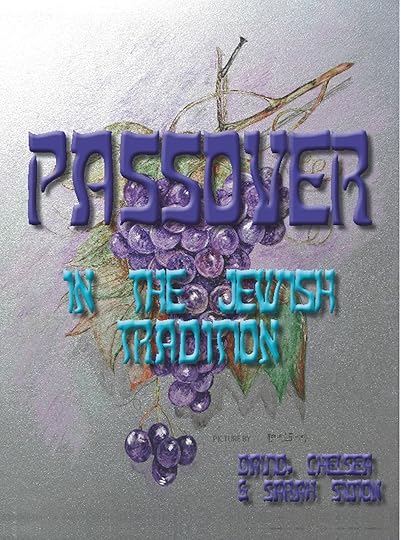 Our Passover Haggadah with ExplanationsThe foundations of our modern family meal are recorded in Exodus 12-13, where Israel is commanded to select a lamb, care for the animal as a pet for three and a half days, then kill the lamb, place the blood on the doorpost, roast the animal, and eat it.
Our Passover Haggadah with ExplanationsThe foundations of our modern family meal are recorded in Exodus 12-13, where Israel is commanded to select a lamb, care for the animal as a pet for three and a half days, then kill the lamb, place the blood on the doorpost, roast the animal, and eat it.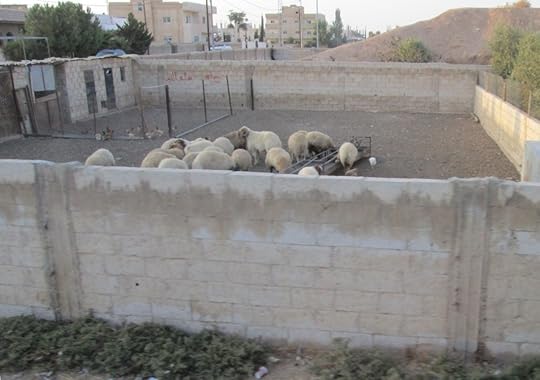 Sheep pen in JordanThe holiday could have arisen from earlier spring harvest celebration where a thank offering was given to God with unleavened cakes cooked in oil (Lev. 7:12). The timing of the Hebrew Exodus would have called for an expansion of the event with added meaning.
Sheep pen in JordanThe holiday could have arisen from earlier spring harvest celebration where a thank offering was given to God with unleavened cakes cooked in oil (Lev. 7:12). The timing of the Hebrew Exodus would have called for an expansion of the event with added meaning.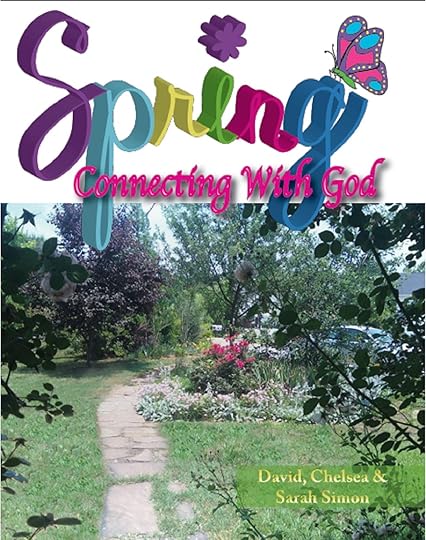 Our book on Passover BackgroundsIn my book Spring: Connecting with God, I tell how the festival has been celebrated or avoided throughout Biblical times. What began as a home celebration became a Temple activity, for which tens of thousands of people each year made the pilgrimage to Jerusalem, after Solomon built the worship center. (By the time Jesus was alive, millions of people were visiting the Temple Herod had renovated.) During the Babylonian exile the practice returned to the home, and is part of what kept the Jewish faith alive. Ezra reinstituted the Temple practices, which continued to be observed, and eventually were held by Jesus and his family.
Our book on Passover BackgroundsIn my book Spring: Connecting with God, I tell how the festival has been celebrated or avoided throughout Biblical times. What began as a home celebration became a Temple activity, for which tens of thousands of people each year made the pilgrimage to Jerusalem, after Solomon built the worship center. (By the time Jesus was alive, millions of people were visiting the Temple Herod had renovated.) During the Babylonian exile the practice returned to the home, and is part of what kept the Jewish faith alive. Ezra reinstituted the Temple practices, which continued to be observed, and eventually were held by Jesus and his family.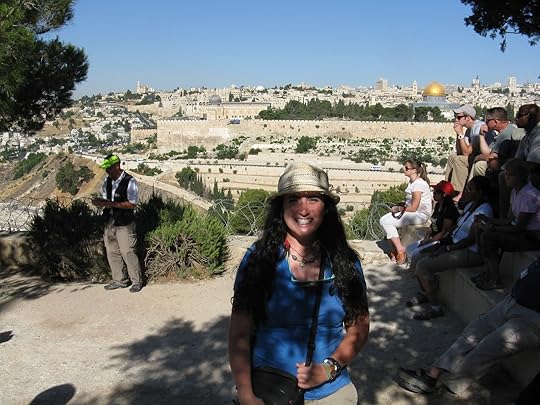 Great spot for a picnic on the Mount of OlivesThe New Testament gives various hints that people looked forward to Passover as an annual event. Entire communities would travel together and camp inside or on the outskirts of Jerusalem. Jesus’ family probably camped near the base of the Mount of Olives, atop which he later prayed the night before he was crucified. Families from the Galilee were able to meet together with families who lived in Judea. This is why Mary was so familiar with her relative Elizabeth. People in Biblical times enjoyed the week-long opportunity to take a break from the regular routine of life and live in a different setting.
Great spot for a picnic on the Mount of OlivesThe New Testament gives various hints that people looked forward to Passover as an annual event. Entire communities would travel together and camp inside or on the outskirts of Jerusalem. Jesus’ family probably camped near the base of the Mount of Olives, atop which he later prayed the night before he was crucified. Families from the Galilee were able to meet together with families who lived in Judea. This is why Mary was so familiar with her relative Elizabeth. People in Biblical times enjoyed the week-long opportunity to take a break from the regular routine of life and live in a different setting.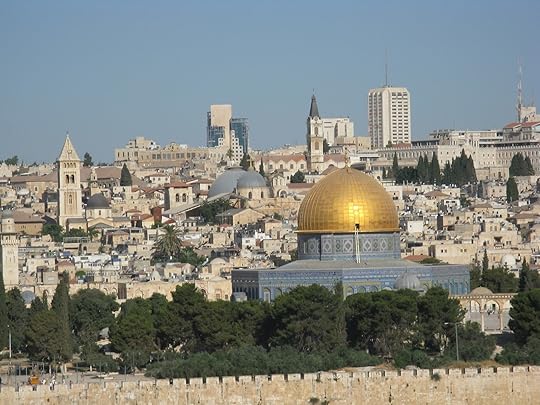 Dome of the Rock where the Temple once satAfter the Temple was destroyed in 70 A.D. many of the Jewish holidays lost meaning, yet Passover grew in importance. Holy days such as Yom Kippur (the Day of Atonement) and Shavuot (the Feast of Weeks, or Pentecost in Greek) are based on the existence of the Temple for sacrifice and receipt of an offering. Chanukah (the Feast of Dedication or Winter - if you’ve read your gospels well, you’ve seen this terminology there!) became a day of mourning because the Temple sat in ruins as it had been during the destruction of Antiochus Epiphanes. Sukkot (the Feast of Tabernacles) remembered the journey from Egypt toward Israel, particularly the long years living in booths in the desert. The festival of Pesach (Passover) took on added importance as the Jewish people prayed once again that an evil Pharaoh (ruler) would be removed and they would be granted another exodus to their homeland.
Dome of the Rock where the Temple once satAfter the Temple was destroyed in 70 A.D. many of the Jewish holidays lost meaning, yet Passover grew in importance. Holy days such as Yom Kippur (the Day of Atonement) and Shavuot (the Feast of Weeks, or Pentecost in Greek) are based on the existence of the Temple for sacrifice and receipt of an offering. Chanukah (the Feast of Dedication or Winter - if you’ve read your gospels well, you’ve seen this terminology there!) became a day of mourning because the Temple sat in ruins as it had been during the destruction of Antiochus Epiphanes. Sukkot (the Feast of Tabernacles) remembered the journey from Egypt toward Israel, particularly the long years living in booths in the desert. The festival of Pesach (Passover) took on added importance as the Jewish people prayed once again that an evil Pharaoh (ruler) would be removed and they would be granted another exodus to their homeland.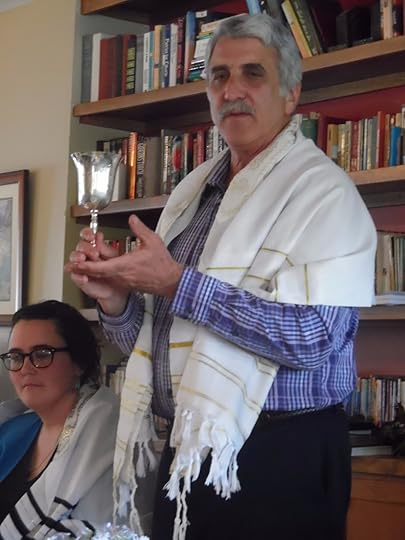 A Home Passover Celebration in Saluda, NCThe elements of families coming together and dining at a banquet, the prayer for the restoration of Jerusalem, and the retelling of the ancient story built Passover into a favorite holiday. During the Middle Ages, European Jews developed ornate Haggadot in order to aid the head of the household in remembering from year to year how to share the elements of faith and tell the story. These books also reminded a literate society of how they were to participate in the telling of the story. Rabbis reinforced family gatherings for Passover in order to bolster Jewish identity within the scattered communities of Europe.
A Home Passover Celebration in Saluda, NCThe elements of families coming together and dining at a banquet, the prayer for the restoration of Jerusalem, and the retelling of the ancient story built Passover into a favorite holiday. During the Middle Ages, European Jews developed ornate Haggadot in order to aid the head of the household in remembering from year to year how to share the elements of faith and tell the story. These books also reminded a literate society of how they were to participate in the telling of the story. Rabbis reinforced family gatherings for Passover in order to bolster Jewish identity within the scattered communities of Europe.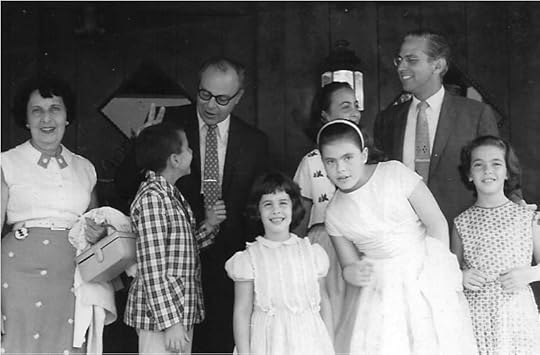 My family getting ready for PassoverToday’s Jewish families still gather to remember the ancient story, to pray for Jerusalem, and to strengthen relationships with each other and with God. My family went to Uncle Stuart’s home for the holiday. I still remember fun activities with my cousins as our parents talked and cooked together. I also remember much of the liturgy shared from the Chase & Sanborn Coffee Haggadah. My cousins and I carry many memories from these times together.Other memories have been created over the years as my sister and I created a spontaneous Passover from memory (because we were unprepared, the shankbone was a milkbone biscuit!), Seders I have put together to teach friends in college and seminary, meals of the Jewish community in Louisville, KY, and celebrations with my wife and daughters add to the yearly Seders I remember. Presentations of the Seder given to churches have also provided fun stories (like the time I wore one black and one brown shoe). These happy memories build faith and family.
My family getting ready for PassoverToday’s Jewish families still gather to remember the ancient story, to pray for Jerusalem, and to strengthen relationships with each other and with God. My family went to Uncle Stuart’s home for the holiday. I still remember fun activities with my cousins as our parents talked and cooked together. I also remember much of the liturgy shared from the Chase & Sanborn Coffee Haggadah. My cousins and I carry many memories from these times together.Other memories have been created over the years as my sister and I created a spontaneous Passover from memory (because we were unprepared, the shankbone was a milkbone biscuit!), Seders I have put together to teach friends in college and seminary, meals of the Jewish community in Louisville, KY, and celebrations with my wife and daughters add to the yearly Seders I remember. Presentations of the Seder given to churches have also provided fun stories (like the time I wore one black and one brown shoe). These happy memories build faith and family.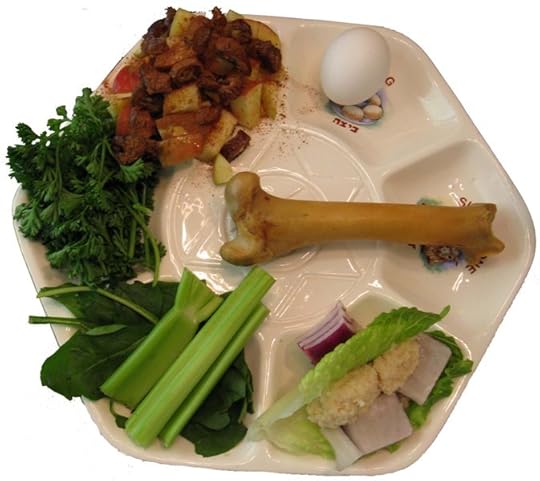 Passover Seder Plate
Passover Seder Plate
The Passover celebration has provided a glue for Jewish society. The elements of faith celebrated in the home with extended family and a lot of fun could help Christians in today’s world. We live in an era where we are letting life (work and school) swamp our time at home. We are letting the “experts” at church direct our faith. Worship is becoming more and more leader-led and non-participatory. Children are separated from parents so they can have “fun,” which dilutes historic religious teachings because they are perceived as “boring.” In this process family memories have been displaced and the Christian faith becomes ever more secular…and lost.
 Our Passover Haggadah with ExplanationsThe foundations of our modern family meal are recorded in Exodus 12-13, where Israel is commanded to select a lamb, care for the animal as a pet for three and a half days, then kill the lamb, place the blood on the doorpost, roast the animal, and eat it.
Our Passover Haggadah with ExplanationsThe foundations of our modern family meal are recorded in Exodus 12-13, where Israel is commanded to select a lamb, care for the animal as a pet for three and a half days, then kill the lamb, place the blood on the doorpost, roast the animal, and eat it. Sheep pen in JordanThe holiday could have arisen from earlier spring harvest celebration where a thank offering was given to God with unleavened cakes cooked in oil (Lev. 7:12). The timing of the Hebrew Exodus would have called for an expansion of the event with added meaning.
Sheep pen in JordanThe holiday could have arisen from earlier spring harvest celebration where a thank offering was given to God with unleavened cakes cooked in oil (Lev. 7:12). The timing of the Hebrew Exodus would have called for an expansion of the event with added meaning. Our book on Passover BackgroundsIn my book Spring: Connecting with God, I tell how the festival has been celebrated or avoided throughout Biblical times. What began as a home celebration became a Temple activity, for which tens of thousands of people each year made the pilgrimage to Jerusalem, after Solomon built the worship center. (By the time Jesus was alive, millions of people were visiting the Temple Herod had renovated.) During the Babylonian exile the practice returned to the home, and is part of what kept the Jewish faith alive. Ezra reinstituted the Temple practices, which continued to be observed, and eventually were held by Jesus and his family.
Our book on Passover BackgroundsIn my book Spring: Connecting with God, I tell how the festival has been celebrated or avoided throughout Biblical times. What began as a home celebration became a Temple activity, for which tens of thousands of people each year made the pilgrimage to Jerusalem, after Solomon built the worship center. (By the time Jesus was alive, millions of people were visiting the Temple Herod had renovated.) During the Babylonian exile the practice returned to the home, and is part of what kept the Jewish faith alive. Ezra reinstituted the Temple practices, which continued to be observed, and eventually were held by Jesus and his family. Great spot for a picnic on the Mount of OlivesThe New Testament gives various hints that people looked forward to Passover as an annual event. Entire communities would travel together and camp inside or on the outskirts of Jerusalem. Jesus’ family probably camped near the base of the Mount of Olives, atop which he later prayed the night before he was crucified. Families from the Galilee were able to meet together with families who lived in Judea. This is why Mary was so familiar with her relative Elizabeth. People in Biblical times enjoyed the week-long opportunity to take a break from the regular routine of life and live in a different setting.
Great spot for a picnic on the Mount of OlivesThe New Testament gives various hints that people looked forward to Passover as an annual event. Entire communities would travel together and camp inside or on the outskirts of Jerusalem. Jesus’ family probably camped near the base of the Mount of Olives, atop which he later prayed the night before he was crucified. Families from the Galilee were able to meet together with families who lived in Judea. This is why Mary was so familiar with her relative Elizabeth. People in Biblical times enjoyed the week-long opportunity to take a break from the regular routine of life and live in a different setting. Dome of the Rock where the Temple once satAfter the Temple was destroyed in 70 A.D. many of the Jewish holidays lost meaning, yet Passover grew in importance. Holy days such as Yom Kippur (the Day of Atonement) and Shavuot (the Feast of Weeks, or Pentecost in Greek) are based on the existence of the Temple for sacrifice and receipt of an offering. Chanukah (the Feast of Dedication or Winter - if you’ve read your gospels well, you’ve seen this terminology there!) became a day of mourning because the Temple sat in ruins as it had been during the destruction of Antiochus Epiphanes. Sukkot (the Feast of Tabernacles) remembered the journey from Egypt toward Israel, particularly the long years living in booths in the desert. The festival of Pesach (Passover) took on added importance as the Jewish people prayed once again that an evil Pharaoh (ruler) would be removed and they would be granted another exodus to their homeland.
Dome of the Rock where the Temple once satAfter the Temple was destroyed in 70 A.D. many of the Jewish holidays lost meaning, yet Passover grew in importance. Holy days such as Yom Kippur (the Day of Atonement) and Shavuot (the Feast of Weeks, or Pentecost in Greek) are based on the existence of the Temple for sacrifice and receipt of an offering. Chanukah (the Feast of Dedication or Winter - if you’ve read your gospels well, you’ve seen this terminology there!) became a day of mourning because the Temple sat in ruins as it had been during the destruction of Antiochus Epiphanes. Sukkot (the Feast of Tabernacles) remembered the journey from Egypt toward Israel, particularly the long years living in booths in the desert. The festival of Pesach (Passover) took on added importance as the Jewish people prayed once again that an evil Pharaoh (ruler) would be removed and they would be granted another exodus to their homeland. A Home Passover Celebration in Saluda, NCThe elements of families coming together and dining at a banquet, the prayer for the restoration of Jerusalem, and the retelling of the ancient story built Passover into a favorite holiday. During the Middle Ages, European Jews developed ornate Haggadot in order to aid the head of the household in remembering from year to year how to share the elements of faith and tell the story. These books also reminded a literate society of how they were to participate in the telling of the story. Rabbis reinforced family gatherings for Passover in order to bolster Jewish identity within the scattered communities of Europe.
A Home Passover Celebration in Saluda, NCThe elements of families coming together and dining at a banquet, the prayer for the restoration of Jerusalem, and the retelling of the ancient story built Passover into a favorite holiday. During the Middle Ages, European Jews developed ornate Haggadot in order to aid the head of the household in remembering from year to year how to share the elements of faith and tell the story. These books also reminded a literate society of how they were to participate in the telling of the story. Rabbis reinforced family gatherings for Passover in order to bolster Jewish identity within the scattered communities of Europe. My family getting ready for PassoverToday’s Jewish families still gather to remember the ancient story, to pray for Jerusalem, and to strengthen relationships with each other and with God. My family went to Uncle Stuart’s home for the holiday. I still remember fun activities with my cousins as our parents talked and cooked together. I also remember much of the liturgy shared from the Chase & Sanborn Coffee Haggadah. My cousins and I carry many memories from these times together.Other memories have been created over the years as my sister and I created a spontaneous Passover from memory (because we were unprepared, the shankbone was a milkbone biscuit!), Seders I have put together to teach friends in college and seminary, meals of the Jewish community in Louisville, KY, and celebrations with my wife and daughters add to the yearly Seders I remember. Presentations of the Seder given to churches have also provided fun stories (like the time I wore one black and one brown shoe). These happy memories build faith and family.
My family getting ready for PassoverToday’s Jewish families still gather to remember the ancient story, to pray for Jerusalem, and to strengthen relationships with each other and with God. My family went to Uncle Stuart’s home for the holiday. I still remember fun activities with my cousins as our parents talked and cooked together. I also remember much of the liturgy shared from the Chase & Sanborn Coffee Haggadah. My cousins and I carry many memories from these times together.Other memories have been created over the years as my sister and I created a spontaneous Passover from memory (because we were unprepared, the shankbone was a milkbone biscuit!), Seders I have put together to teach friends in college and seminary, meals of the Jewish community in Louisville, KY, and celebrations with my wife and daughters add to the yearly Seders I remember. Presentations of the Seder given to churches have also provided fun stories (like the time I wore one black and one brown shoe). These happy memories build faith and family. Passover Seder Plate
Passover Seder PlateThe Passover celebration has provided a glue for Jewish society. The elements of faith celebrated in the home with extended family and a lot of fun could help Christians in today’s world. We live in an era where we are letting life (work and school) swamp our time at home. We are letting the “experts” at church direct our faith. Worship is becoming more and more leader-led and non-participatory. Children are separated from parents so they can have “fun,” which dilutes historic religious teachings because they are perceived as “boring.” In this process family memories have been displaced and the Christian faith becomes ever more secular…and lost.
Published on March 17, 2017 03:30
March 15, 2017
A Boy Named David
Today we’ll take a fresh look at an ageless story which has been told often, but is worth telling again. The story contains elements of self-preservation, protection of a people, and heroism which guides us in faith and also gives an understanding of the land where the epic events and teachings of the Bible took place.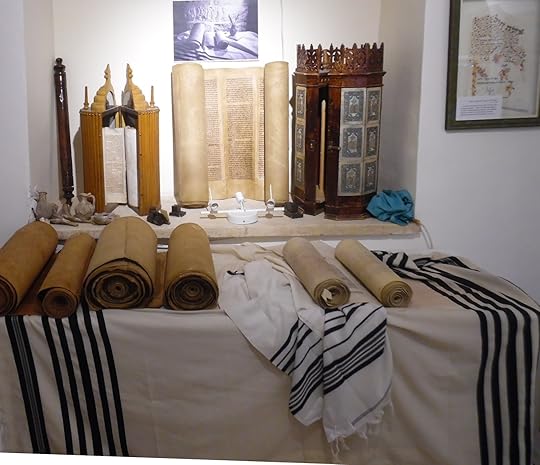 Scrolls at the 5th Quarter in JerusalemThe story begins in the fields outside a village called Bethlehem, or the House of Bread. Shepherds had passed through this village for more than a thousand years before our story occurred. Abraham, Isaac, and Jacob are known to have passed along the road, Rahab settled here after leaving Jericho, and Boaz lived in the village. Jesse and his eight sons (who are the subject of our story) also lived here.
Scrolls at the 5th Quarter in JerusalemThe story begins in the fields outside a village called Bethlehem, or the House of Bread. Shepherds had passed through this village for more than a thousand years before our story occurred. Abraham, Isaac, and Jacob are known to have passed along the road, Rahab settled here after leaving Jericho, and Boaz lived in the village. Jesse and his eight sons (who are the subject of our story) also lived here. Elah Valley in Jerusalem where David fought GoliathThe town of Bethlehem sat near an important junction where the Central Ridge Road meets the road which descends through the Elah Valley to the coast.
Elah Valley in Jerusalem where David fought GoliathThe town of Bethlehem sat near an important junction where the Central Ridge Road meets the road which descends through the Elah Valley to the coast.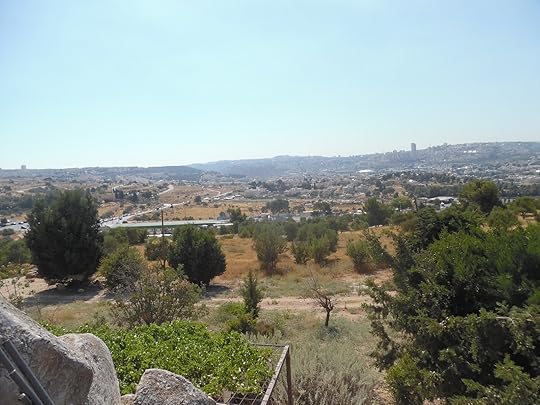 Road leading down to the Elah Valley from Ramat RachelIn the days of King Saul, the Philistines (also called the Sea Peoples) were enemies of the new Kingdom of Israel. The Philistines lived along the coast in five major towns and surrounding villages. Throughout their history, they sought to expand their territory. One area of expansion was through the Elah Valley and up the hill to the Central Ridge Road.
Road leading down to the Elah Valley from Ramat RachelIn the days of King Saul, the Philistines (also called the Sea Peoples) were enemies of the new Kingdom of Israel. The Philistines lived along the coast in five major towns and surrounding villages. Throughout their history, they sought to expand their territory. One area of expansion was through the Elah Valley and up the hill to the Central Ridge Road. 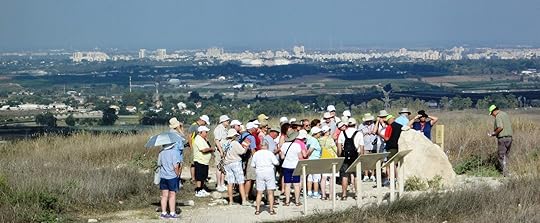 Looking into Philistine territory from Gezer, IsraelThe Bible tells us of one such war initiative of the Philistines. “Now the Philistines gathered their forces for war and assembled at Sokoh in Judah. They pitched camp at Ephes Dammim, between Sokoh and Azekah.” (1 Sam 17).
Looking into Philistine territory from Gezer, IsraelThe Bible tells us of one such war initiative of the Philistines. “Now the Philistines gathered their forces for war and assembled at Sokoh in Judah. They pitched camp at Ephes Dammim, between Sokoh and Azekah.” (1 Sam 17).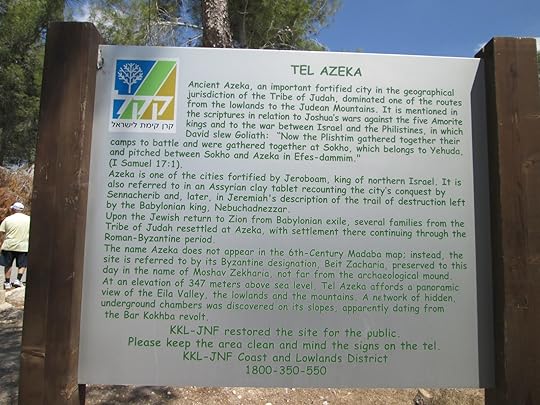 Information sign at Tel Azeka, IsraelKing Saul responded by enrolling enlistees and sending an army down the road into the Elah Valley, and they camped near Azekah. “A champion named Goliath, who was from Gath, came out of the Philistine camp. His height was six cubits and a span. He had a bronze helmet on his head and wore a coat of scale armor of bronze weighing five thousand shekels; on his legs he wore bronze greaves, and a bronze javelin was slung on his back. His spear shaft was like a weaver’s rod, and its iron point weighed six hundred shekels. His shield bearer went ahead of him.”
Information sign at Tel Azeka, IsraelKing Saul responded by enrolling enlistees and sending an army down the road into the Elah Valley, and they camped near Azekah. “A champion named Goliath, who was from Gath, came out of the Philistine camp. His height was six cubits and a span. He had a bronze helmet on his head and wore a coat of scale armor of bronze weighing five thousand shekels; on his legs he wore bronze greaves, and a bronze javelin was slung on his back. His spear shaft was like a weaver’s rod, and its iron point weighed six hundred shekels. His shield bearer went ahead of him.”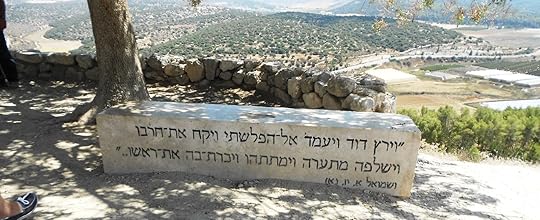 Looking into Elah Valley from AzekahThe Hebrews trembled when they saw the nine foot giant. In fear they froze and did not know what to do. For forty days the giant would come down from the Philistine camp and issue the challenge, “Why do you come out and line up for battle? Am I not a Philistine, and are you not the servants of Saul? Choose a man and have him come down to me. If he is able to fight and kill me, we will become your subjects; but if I overcome him and kill him, you will become our subjects and serve us. This day I defy the armies of Israel! Give me a man and let us fight each other.”
Looking into Elah Valley from AzekahThe Hebrews trembled when they saw the nine foot giant. In fear they froze and did not know what to do. For forty days the giant would come down from the Philistine camp and issue the challenge, “Why do you come out and line up for battle? Am I not a Philistine, and are you not the servants of Saul? Choose a man and have him come down to me. If he is able to fight and kill me, we will become your subjects; but if I overcome him and kill him, you will become our subjects and serve us. This day I defy the armies of Israel! Give me a man and let us fight each other.”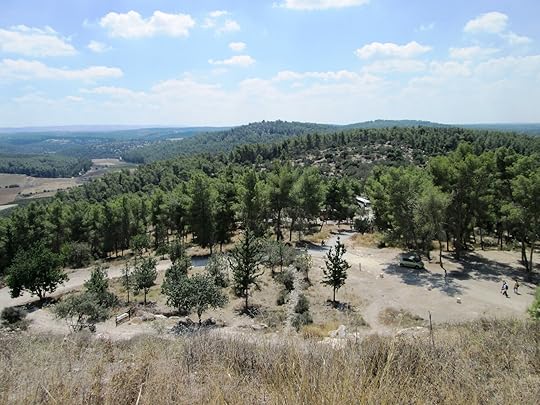 Looking into Elah Valley from Tel AzekahFor forty days the giant Goliath descended from his hometown of Gath in order to challenge the Hebrews. The standoff lasted so long that Jesse, who had three sons (Eliab, Abinadab, and Shimma) among the camp of Israel, decided to try to encourage his family. He sent his youngest son, David, to carry food from his home in Bethlehem to his sons who were camped in the Elah Valley.
Looking into Elah Valley from Tel AzekahFor forty days the giant Goliath descended from his hometown of Gath in order to challenge the Hebrews. The standoff lasted so long that Jesse, who had three sons (Eliab, Abinadab, and Shimma) among the camp of Israel, decided to try to encourage his family. He sent his youngest son, David, to carry food from his home in Bethlehem to his sons who were camped in the Elah Valley.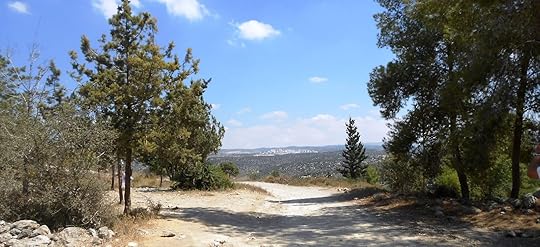 Looking east from Tel AzekahWhile David was delivering food to his brothers, Goliath descended to repeat his challenge before the army of Israel. David told his brothers that he would fight the Giant, and this was told to the King, but Saul thought the boy was too young.
Looking east from Tel AzekahWhile David was delivering food to his brothers, Goliath descended to repeat his challenge before the army of Israel. David told his brothers that he would fight the Giant, and this was told to the King, but Saul thought the boy was too young. 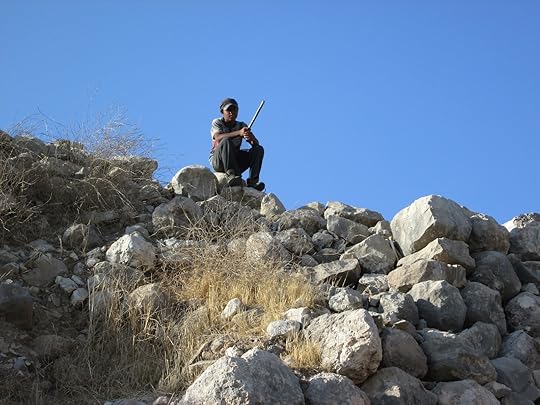 Shepherd near Lachish in IsraelDavid told the King he was able to defend his sheep against lions and bears. He pushed his desire to fight the Giant against every objection the king could dish out his way. Because no one else was willing step forward, the king allowed a young shepherd to accept the challenge.
Shepherd near Lachish in IsraelDavid told the King he was able to defend his sheep against lions and bears. He pushed his desire to fight the Giant against every objection the king could dish out his way. Because no one else was willing step forward, the king allowed a young shepherd to accept the challenge.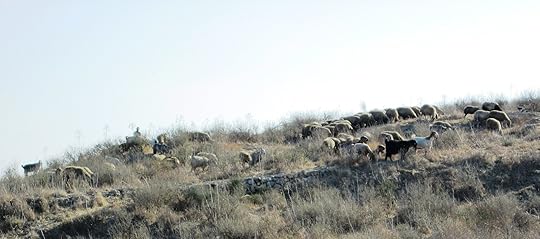 Sheep near Lachish in IsraelWe all know the outcome - with one stone in a sling, David, the young shepherd, felled the nine foot giant. He also kept the giant’s brothers at bay with other smooth stones collected for ammunition.
Sheep near Lachish in IsraelWe all know the outcome - with one stone in a sling, David, the young shepherd, felled the nine foot giant. He also kept the giant’s brothers at bay with other smooth stones collected for ammunition.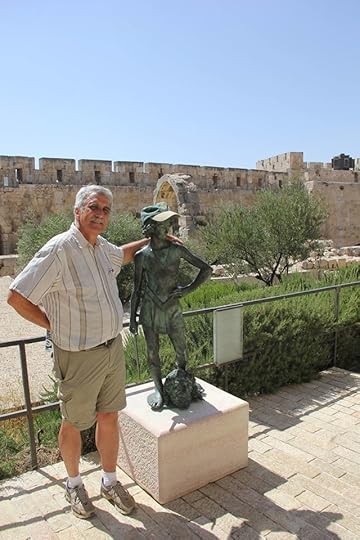 Two Davids at Tower of Israel Museum, Jerusalem
Two Davids at Tower of Israel Museum, Jerusalem
On our tour of Israel May 5-18 we will visit the Valley of Elah, we will see Azekah, and we will ascend Gath. We will retell the stories and relive the events which changed history so long ago. I invite you to join us on this trip in order to experience the stories of the Bible as they come to life.
 Scrolls at the 5th Quarter in JerusalemThe story begins in the fields outside a village called Bethlehem, or the House of Bread. Shepherds had passed through this village for more than a thousand years before our story occurred. Abraham, Isaac, and Jacob are known to have passed along the road, Rahab settled here after leaving Jericho, and Boaz lived in the village. Jesse and his eight sons (who are the subject of our story) also lived here.
Scrolls at the 5th Quarter in JerusalemThe story begins in the fields outside a village called Bethlehem, or the House of Bread. Shepherds had passed through this village for more than a thousand years before our story occurred. Abraham, Isaac, and Jacob are known to have passed along the road, Rahab settled here after leaving Jericho, and Boaz lived in the village. Jesse and his eight sons (who are the subject of our story) also lived here. Elah Valley in Jerusalem where David fought GoliathThe town of Bethlehem sat near an important junction where the Central Ridge Road meets the road which descends through the Elah Valley to the coast.
Elah Valley in Jerusalem where David fought GoliathThe town of Bethlehem sat near an important junction where the Central Ridge Road meets the road which descends through the Elah Valley to the coast. Road leading down to the Elah Valley from Ramat RachelIn the days of King Saul, the Philistines (also called the Sea Peoples) were enemies of the new Kingdom of Israel. The Philistines lived along the coast in five major towns and surrounding villages. Throughout their history, they sought to expand their territory. One area of expansion was through the Elah Valley and up the hill to the Central Ridge Road.
Road leading down to the Elah Valley from Ramat RachelIn the days of King Saul, the Philistines (also called the Sea Peoples) were enemies of the new Kingdom of Israel. The Philistines lived along the coast in five major towns and surrounding villages. Throughout their history, they sought to expand their territory. One area of expansion was through the Elah Valley and up the hill to the Central Ridge Road.  Looking into Philistine territory from Gezer, IsraelThe Bible tells us of one such war initiative of the Philistines. “Now the Philistines gathered their forces for war and assembled at Sokoh in Judah. They pitched camp at Ephes Dammim, between Sokoh and Azekah.” (1 Sam 17).
Looking into Philistine territory from Gezer, IsraelThe Bible tells us of one such war initiative of the Philistines. “Now the Philistines gathered their forces for war and assembled at Sokoh in Judah. They pitched camp at Ephes Dammim, between Sokoh and Azekah.” (1 Sam 17). Information sign at Tel Azeka, IsraelKing Saul responded by enrolling enlistees and sending an army down the road into the Elah Valley, and they camped near Azekah. “A champion named Goliath, who was from Gath, came out of the Philistine camp. His height was six cubits and a span. He had a bronze helmet on his head and wore a coat of scale armor of bronze weighing five thousand shekels; on his legs he wore bronze greaves, and a bronze javelin was slung on his back. His spear shaft was like a weaver’s rod, and its iron point weighed six hundred shekels. His shield bearer went ahead of him.”
Information sign at Tel Azeka, IsraelKing Saul responded by enrolling enlistees and sending an army down the road into the Elah Valley, and they camped near Azekah. “A champion named Goliath, who was from Gath, came out of the Philistine camp. His height was six cubits and a span. He had a bronze helmet on his head and wore a coat of scale armor of bronze weighing five thousand shekels; on his legs he wore bronze greaves, and a bronze javelin was slung on his back. His spear shaft was like a weaver’s rod, and its iron point weighed six hundred shekels. His shield bearer went ahead of him.” Looking into Elah Valley from AzekahThe Hebrews trembled when they saw the nine foot giant. In fear they froze and did not know what to do. For forty days the giant would come down from the Philistine camp and issue the challenge, “Why do you come out and line up for battle? Am I not a Philistine, and are you not the servants of Saul? Choose a man and have him come down to me. If he is able to fight and kill me, we will become your subjects; but if I overcome him and kill him, you will become our subjects and serve us. This day I defy the armies of Israel! Give me a man and let us fight each other.”
Looking into Elah Valley from AzekahThe Hebrews trembled when they saw the nine foot giant. In fear they froze and did not know what to do. For forty days the giant would come down from the Philistine camp and issue the challenge, “Why do you come out and line up for battle? Am I not a Philistine, and are you not the servants of Saul? Choose a man and have him come down to me. If he is able to fight and kill me, we will become your subjects; but if I overcome him and kill him, you will become our subjects and serve us. This day I defy the armies of Israel! Give me a man and let us fight each other.” Looking into Elah Valley from Tel AzekahFor forty days the giant Goliath descended from his hometown of Gath in order to challenge the Hebrews. The standoff lasted so long that Jesse, who had three sons (Eliab, Abinadab, and Shimma) among the camp of Israel, decided to try to encourage his family. He sent his youngest son, David, to carry food from his home in Bethlehem to his sons who were camped in the Elah Valley.
Looking into Elah Valley from Tel AzekahFor forty days the giant Goliath descended from his hometown of Gath in order to challenge the Hebrews. The standoff lasted so long that Jesse, who had three sons (Eliab, Abinadab, and Shimma) among the camp of Israel, decided to try to encourage his family. He sent his youngest son, David, to carry food from his home in Bethlehem to his sons who were camped in the Elah Valley. Looking east from Tel AzekahWhile David was delivering food to his brothers, Goliath descended to repeat his challenge before the army of Israel. David told his brothers that he would fight the Giant, and this was told to the King, but Saul thought the boy was too young.
Looking east from Tel AzekahWhile David was delivering food to his brothers, Goliath descended to repeat his challenge before the army of Israel. David told his brothers that he would fight the Giant, and this was told to the King, but Saul thought the boy was too young.  Shepherd near Lachish in IsraelDavid told the King he was able to defend his sheep against lions and bears. He pushed his desire to fight the Giant against every objection the king could dish out his way. Because no one else was willing step forward, the king allowed a young shepherd to accept the challenge.
Shepherd near Lachish in IsraelDavid told the King he was able to defend his sheep against lions and bears. He pushed his desire to fight the Giant against every objection the king could dish out his way. Because no one else was willing step forward, the king allowed a young shepherd to accept the challenge. Sheep near Lachish in IsraelWe all know the outcome - with one stone in a sling, David, the young shepherd, felled the nine foot giant. He also kept the giant’s brothers at bay with other smooth stones collected for ammunition.
Sheep near Lachish in IsraelWe all know the outcome - with one stone in a sling, David, the young shepherd, felled the nine foot giant. He also kept the giant’s brothers at bay with other smooth stones collected for ammunition. Two Davids at Tower of Israel Museum, Jerusalem
Two Davids at Tower of Israel Museum, JerusalemOn our tour of Israel May 5-18 we will visit the Valley of Elah, we will see Azekah, and we will ascend Gath. We will retell the stories and relive the events which changed history so long ago. I invite you to join us on this trip in order to experience the stories of the Bible as they come to life.
Published on March 15, 2017 03:30
March 10, 2017
The Year of Murder (Purim)
It started out covert and hidden. It was not meant to get out to the public, at least not (or I should say most definitely not) in the way it was revealed. But if the trick was to be successful, it needed to be revealed, with lots of PR and a positive spin. And it is here we start the story:
Oh once there was a wicked wicked man,And Haman was his name, Sir.He would have murdered all the Jews,Tho they were not to blame, Sir. Oh yes, there was a wicked (saying it once is not enough, which is why the song repeats this word. I could say evil or many other things about him) wicked man and his name was Haman. Haman (magnificent) son of Hammedatha (the double) the Agagite (I will topple) came from a wicked ancestry, the line of Amalek. This tribe of people sought to destroy the Hebrew people when they were helpless ex-slaves exiting Egypt. Haman wanted to complete the task.He called his sons and henchmen in to help him plan how to destroy the Hebrew people. After the plan was developed they cast lots (called the pur - פּוּר) to determine the date they would kill the Jews. The dice selected a date almost a year away to do their deed. It was a year of planning for the murder of God’s people.
Oh yes, there was a wicked (saying it once is not enough, which is why the song repeats this word. I could say evil or many other things about him) wicked man and his name was Haman. Haman (magnificent) son of Hammedatha (the double) the Agagite (I will topple) came from a wicked ancestry, the line of Amalek. This tribe of people sought to destroy the Hebrew people when they were helpless ex-slaves exiting Egypt. Haman wanted to complete the task.He called his sons and henchmen in to help him plan how to destroy the Hebrew people. After the plan was developed they cast lots (called the pur - פּוּר) to determine the date they would kill the Jews. The dice selected a date almost a year away to do their deed. It was a year of planning for the murder of God’s people.
And Esther was the lovely queen of King AhashveyroshWhen Haman said he'd kill us all,Oh my how he did scare us.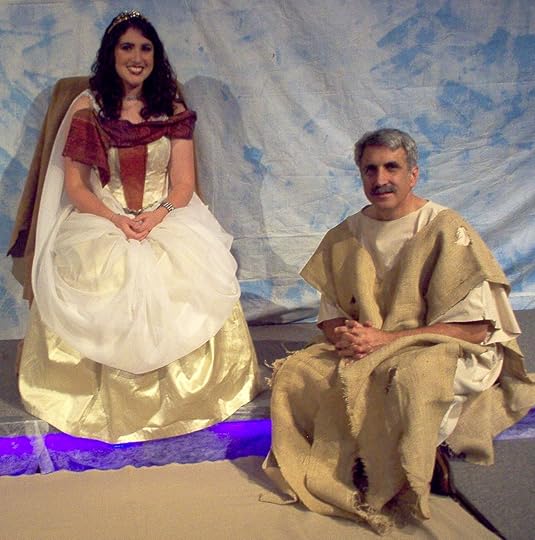 Much can be said about Queen Esther. She was a niece of Mordecai, one of the exiles from Judea to Babylon. Her original name was Hadassah (myrtle tree), but her name was changed to Esther (star) when she entered the beauty pageant bo become queen of Persia.
Much can be said about Queen Esther. She was a niece of Mordecai, one of the exiles from Judea to Babylon. Her original name was Hadassah (myrtle tree), but her name was changed to Esther (star) when she entered the beauty pageant bo become queen of Persia.
But Mordechai her cousin boldSaid: "What a dreadful chutzpahIf guns were but invented now,This Haman I would shoot, Sir."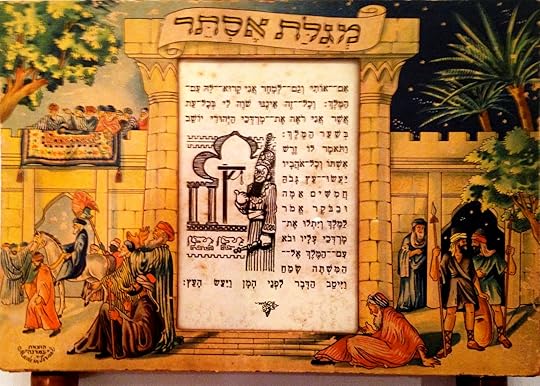 This is a great verse in the song for it talks about Mordecai’s discovery of Haman’s plot in most graphic terms. Haman is called out for his nerve (chutzpah), not just audacity or effrontery but his chutzpah at even thinking God would not discover the plot and protect the Jewish people. Mordecai was so angry when at Haman’s bold venture he would have shot the villain: if gons had been invented at that time!
This is a great verse in the song for it talks about Mordecai’s discovery of Haman’s plot in most graphic terms. Haman is called out for his nerve (chutzpah), not just audacity or effrontery but his chutzpah at even thinking God would not discover the plot and protect the Jewish people. Mordecai was so angry when at Haman’s bold venture he would have shot the villain: if gons had been invented at that time!
*When Esther speaking to the KingOf Haman's plot made mention"Ha, ha," said he, "Oh, no he won't!I'll spoil his bad intention."*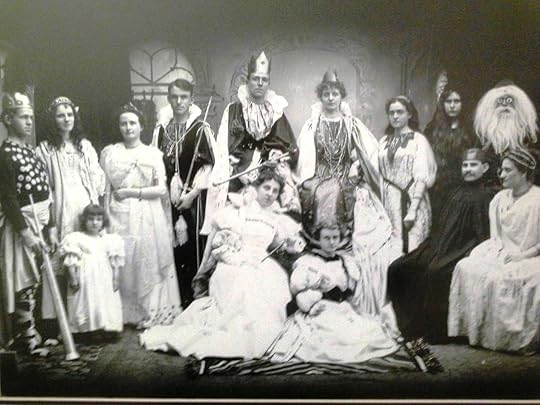 When Mordecai told his niece she must go before King Ahashveyros in order to reveal what Haman was up to, she got very nervous. The Jewish people prayed so she would gain courage and go before the King. When Esther approached the monarch, he showed favor. Esther invited her husband and the villain Haman to two banquets. Haman was actually the guest of honor. He bragged to his wife Zeresh (Gold), “I’m the only person Queen Esther invited to accompany the king to the banquet.”But anger got the best of him. He could not stand Mordecai, and planned to kill him on a scaffolding he built near his home. Esther chapter six contains a strange turn of events when God in jest forces Haman to honor Mordecai.
When Mordecai told his niece she must go before King Ahashveyros in order to reveal what Haman was up to, she got very nervous. The Jewish people prayed so she would gain courage and go before the King. When Esther approached the monarch, he showed favor. Esther invited her husband and the villain Haman to two banquets. Haman was actually the guest of honor. He bragged to his wife Zeresh (Gold), “I’m the only person Queen Esther invited to accompany the king to the banquet.”But anger got the best of him. He could not stand Mordecai, and planned to kill him on a scaffolding he built near his home. Esther chapter six contains a strange turn of events when God in jest forces Haman to honor Mordecai.
The guest of honor he shall be,This clever Mr. SmartyAnd high above us he shall swingAt a little hanging party.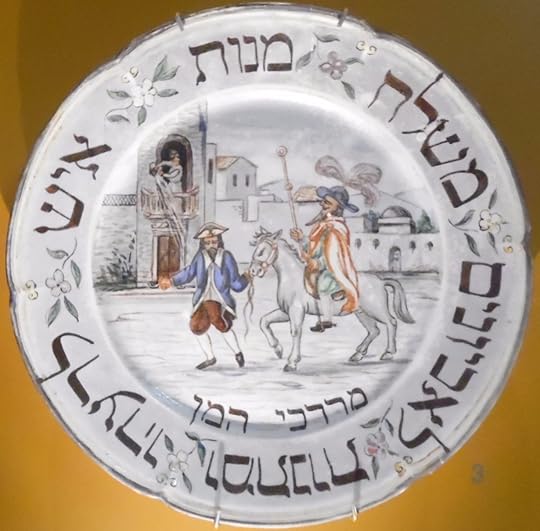 The bitter turn of events in chapter six was not the worst thing that could happen to Haman (although he thought so at the time). The worst came in the next chapter, on the very same day, when Haman attended the banquet where he would be honored. And, in a sense, Esther did honor him, by telling King Ahashveyros the truth about his “most trusted adviser.” The King was not pleased and called for Haman’s immediate execution.
The bitter turn of events in chapter six was not the worst thing that could happen to Haman (although he thought so at the time). The worst came in the next chapter, on the very same day, when Haman attended the banquet where he would be honored. And, in a sense, Esther did honor him, by telling King Ahashveyros the truth about his “most trusted adviser.” The King was not pleased and called for Haman’s immediate execution.
Of all his cruel and unkind waysThis little joke did cure himAnd don't forget we owe him thanksFor this jolly feast of Purim.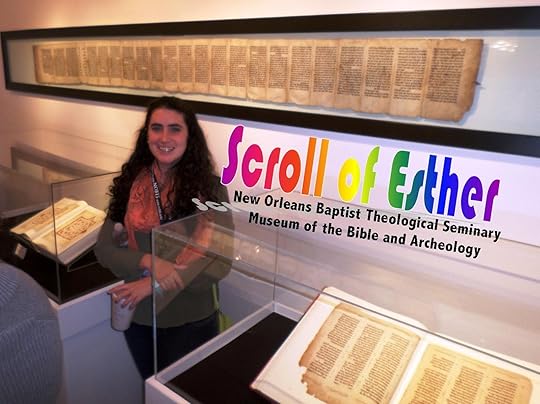 The Jewish people celebrate Purim to remember how God watches out for His people. They throw parties, wear costumes and eat Hamantaschen.
The Jewish people celebrate Purim to remember how God watches out for His people. They throw parties, wear costumes and eat Hamantaschen.
Oh once there was a wicked wicked man,And Haman was his name, Sir.He would have murdered all the Jews,Tho they were not to blame, Sir.
 Oh yes, there was a wicked (saying it once is not enough, which is why the song repeats this word. I could say evil or many other things about him) wicked man and his name was Haman. Haman (magnificent) son of Hammedatha (the double) the Agagite (I will topple) came from a wicked ancestry, the line of Amalek. This tribe of people sought to destroy the Hebrew people when they were helpless ex-slaves exiting Egypt. Haman wanted to complete the task.He called his sons and henchmen in to help him plan how to destroy the Hebrew people. After the plan was developed they cast lots (called the pur - פּוּר) to determine the date they would kill the Jews. The dice selected a date almost a year away to do their deed. It was a year of planning for the murder of God’s people.
Oh yes, there was a wicked (saying it once is not enough, which is why the song repeats this word. I could say evil or many other things about him) wicked man and his name was Haman. Haman (magnificent) son of Hammedatha (the double) the Agagite (I will topple) came from a wicked ancestry, the line of Amalek. This tribe of people sought to destroy the Hebrew people when they were helpless ex-slaves exiting Egypt. Haman wanted to complete the task.He called his sons and henchmen in to help him plan how to destroy the Hebrew people. After the plan was developed they cast lots (called the pur - פּוּר) to determine the date they would kill the Jews. The dice selected a date almost a year away to do their deed. It was a year of planning for the murder of God’s people.
And Esther was the lovely queen of King AhashveyroshWhen Haman said he'd kill us all,Oh my how he did scare us.
 Much can be said about Queen Esther. She was a niece of Mordecai, one of the exiles from Judea to Babylon. Her original name was Hadassah (myrtle tree), but her name was changed to Esther (star) when she entered the beauty pageant bo become queen of Persia.
Much can be said about Queen Esther. She was a niece of Mordecai, one of the exiles from Judea to Babylon. Her original name was Hadassah (myrtle tree), but her name was changed to Esther (star) when she entered the beauty pageant bo become queen of Persia.
But Mordechai her cousin boldSaid: "What a dreadful chutzpahIf guns were but invented now,This Haman I would shoot, Sir."
 This is a great verse in the song for it talks about Mordecai’s discovery of Haman’s plot in most graphic terms. Haman is called out for his nerve (chutzpah), not just audacity or effrontery but his chutzpah at even thinking God would not discover the plot and protect the Jewish people. Mordecai was so angry when at Haman’s bold venture he would have shot the villain: if gons had been invented at that time!
This is a great verse in the song for it talks about Mordecai’s discovery of Haman’s plot in most graphic terms. Haman is called out for his nerve (chutzpah), not just audacity or effrontery but his chutzpah at even thinking God would not discover the plot and protect the Jewish people. Mordecai was so angry when at Haman’s bold venture he would have shot the villain: if gons had been invented at that time!
*When Esther speaking to the KingOf Haman's plot made mention"Ha, ha," said he, "Oh, no he won't!I'll spoil his bad intention."*
 When Mordecai told his niece she must go before King Ahashveyros in order to reveal what Haman was up to, she got very nervous. The Jewish people prayed so she would gain courage and go before the King. When Esther approached the monarch, he showed favor. Esther invited her husband and the villain Haman to two banquets. Haman was actually the guest of honor. He bragged to his wife Zeresh (Gold), “I’m the only person Queen Esther invited to accompany the king to the banquet.”But anger got the best of him. He could not stand Mordecai, and planned to kill him on a scaffolding he built near his home. Esther chapter six contains a strange turn of events when God in jest forces Haman to honor Mordecai.
When Mordecai told his niece she must go before King Ahashveyros in order to reveal what Haman was up to, she got very nervous. The Jewish people prayed so she would gain courage and go before the King. When Esther approached the monarch, he showed favor. Esther invited her husband and the villain Haman to two banquets. Haman was actually the guest of honor. He bragged to his wife Zeresh (Gold), “I’m the only person Queen Esther invited to accompany the king to the banquet.”But anger got the best of him. He could not stand Mordecai, and planned to kill him on a scaffolding he built near his home. Esther chapter six contains a strange turn of events when God in jest forces Haman to honor Mordecai.
The guest of honor he shall be,This clever Mr. SmartyAnd high above us he shall swingAt a little hanging party.
 The bitter turn of events in chapter six was not the worst thing that could happen to Haman (although he thought so at the time). The worst came in the next chapter, on the very same day, when Haman attended the banquet where he would be honored. And, in a sense, Esther did honor him, by telling King Ahashveyros the truth about his “most trusted adviser.” The King was not pleased and called for Haman’s immediate execution.
The bitter turn of events in chapter six was not the worst thing that could happen to Haman (although he thought so at the time). The worst came in the next chapter, on the very same day, when Haman attended the banquet where he would be honored. And, in a sense, Esther did honor him, by telling King Ahashveyros the truth about his “most trusted adviser.” The King was not pleased and called for Haman’s immediate execution.
Of all his cruel and unkind waysThis little joke did cure himAnd don't forget we owe him thanksFor this jolly feast of Purim.
 The Jewish people celebrate Purim to remember how God watches out for His people. They throw parties, wear costumes and eat Hamantaschen.
The Jewish people celebrate Purim to remember how God watches out for His people. They throw parties, wear costumes and eat Hamantaschen.
Published on March 10, 2017 12:30
March 8, 2017
The Shephlah
We will spend the third day of our 14 day trip to the Holy Land in May 2018 in the shephelah, a series of low hills which connects the coast of Israel to the Judean Highlands. This region contains important transportation hubs and has been one of the most hotly contested regions in Israel.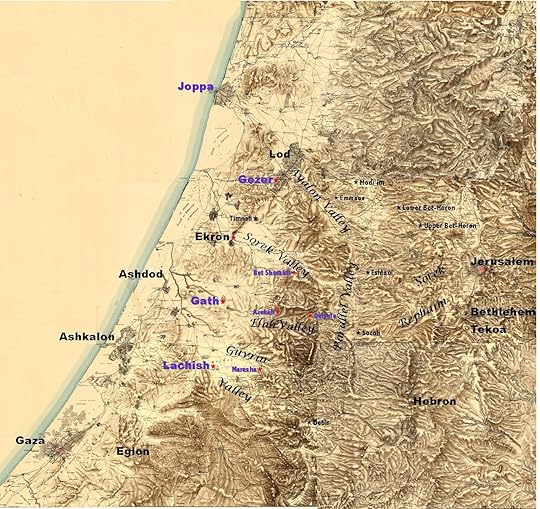 The word שְׁפֵלָה, Shephlah, sephela, saphela or shefla comes from the word low, and thus indicates low or sinking lands. This unique landform exists from the east of Tel Aviv and the Plain of Sharon and ends north of the Negev. The Shephlah rises from the coastal plain to the Judean highlands. The rumpled land of this area contains low hills and valleys between the hills.
The word שְׁפֵלָה, Shephlah, sephela, saphela or shefla comes from the word low, and thus indicates low or sinking lands. This unique landform exists from the east of Tel Aviv and the Plain of Sharon and ends north of the Negev. The Shephlah rises from the coastal plain to the Judean highlands. The rumpled land of this area contains low hills and valleys between the hills.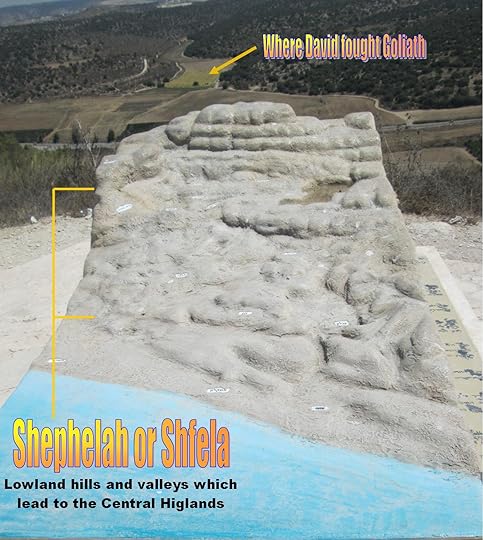 Throughout the history of the promised land people have traversed the valleys in order to reach the central highlands. Today the roads of Israel continue to follow the Ayalon Valley, Sorek Valley, Elah Valley, Beth Gurvin Valley and the Lachish Valley. We will visit sites in each of the five major routes on our the third day of our 14 day trip to the Holy Land.
Throughout the history of the promised land people have traversed the valleys in order to reach the central highlands. Today the roads of Israel continue to follow the Ayalon Valley, Sorek Valley, Elah Valley, Beth Gurvin Valley and the Lachish Valley. We will visit sites in each of the five major routes on our the third day of our 14 day trip to the Holy Land.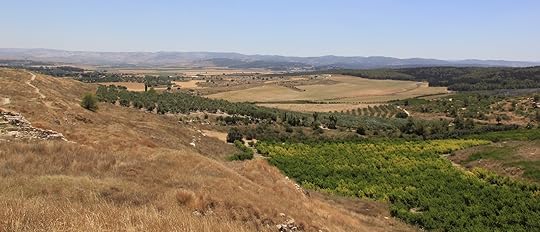 At the head of each of the valleys there is a high hill upon which a fortified city has been built. At the head of the Ayalon Valley this is the city of Gezer. At the top of the road are the towns of Yalu and Emmaus. The road runs from Jaffa across the coastal plain, up the Ayalon Valley and the Beit Horon ascent to Jerusalem. The route is still popular today with Israel Highway 1 using this route from Jerusalem past Ben Gurion Airport to Jaffa.
At the head of each of the valleys there is a high hill upon which a fortified city has been built. At the head of the Ayalon Valley this is the city of Gezer. At the top of the road are the towns of Yalu and Emmaus. The road runs from Jaffa across the coastal plain, up the Ayalon Valley and the Beit Horon ascent to Jerusalem. The route is still popular today with Israel Highway 1 using this route from Jerusalem past Ben Gurion Airport to Jaffa.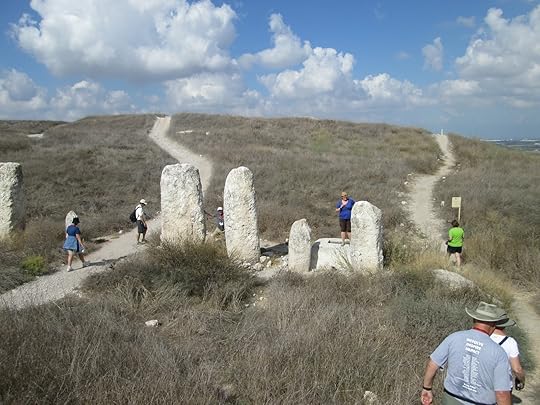 The Ayalon Valley is a place of much history. This is the place where the sun stood still during Joshua’s conquest of the land. The Amarna letters written to Pharaohs Akhenaten and Tutankhamun menton the town of Ayalon. Pharaoh Sheshonk I attacked the Amorites in this area in the 10th century BC. King Saul and the Maccabees also fought in this valley. The state of Israel fought several major battles for the Ayalon Valley in the twentieth century.
The Ayalon Valley is a place of much history. This is the place where the sun stood still during Joshua’s conquest of the land. The Amarna letters written to Pharaohs Akhenaten and Tutankhamun menton the town of Ayalon. Pharaoh Sheshonk I attacked the Amorites in this area in the 10th century BC. King Saul and the Maccabees also fought in this valley. The state of Israel fought several major battles for the Ayalon Valley in the twentieth century.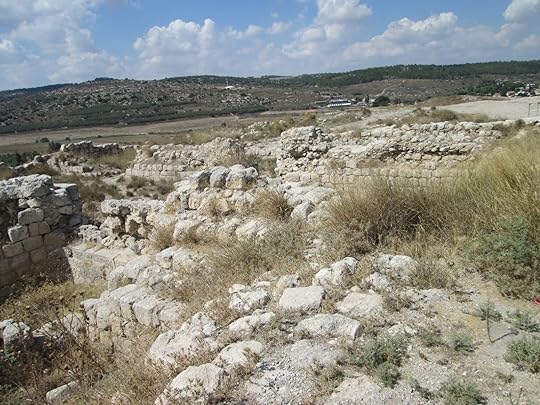 The Sorek Valley extends from Ekron on the coastal plain to Eshtol at the top of the valley. The town of Beit Shemesh (recorded in 1 Samuel 6) is in at a junction where the valley narrows. The Sorek Valley was home to Samson and Delilah. The main road to Jerusalem ran through this valley in the early nineteenth century. The railroad from Jaffa to Jerusalem still runs through the Sorek Valley.
The Sorek Valley extends from Ekron on the coastal plain to Eshtol at the top of the valley. The town of Beit Shemesh (recorded in 1 Samuel 6) is in at a junction where the valley narrows. The Sorek Valley was home to Samson and Delilah. The main road to Jerusalem ran through this valley in the early nineteenth century. The railroad from Jaffa to Jerusalem still runs through the Sorek Valley.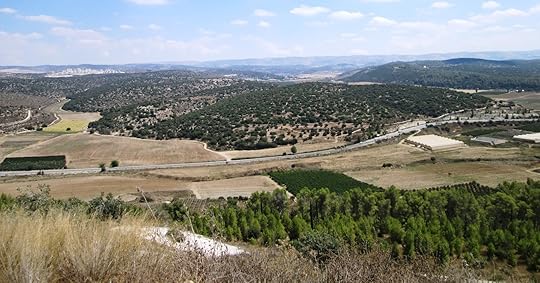 The Elah or terebinth Valley is a known for its many oak trees and great fertility. The lower end of the valley is protected by the fortress town of Gath, which is also the hometown of Goliath. The valley runs past Azekah and Socoh to Adullam. David fought Goliath in this valley, picking up five smooth stones from Elah creek. We will visit Khirbet Qeiyafa while in visiting Elah Valley.
The Elah or terebinth Valley is a known for its many oak trees and great fertility. The lower end of the valley is protected by the fortress town of Gath, which is also the hometown of Goliath. The valley runs past Azekah and Socoh to Adullam. David fought Goliath in this valley, picking up five smooth stones from Elah creek. We will visit Khirbet Qeiyafa while in visiting Elah Valley.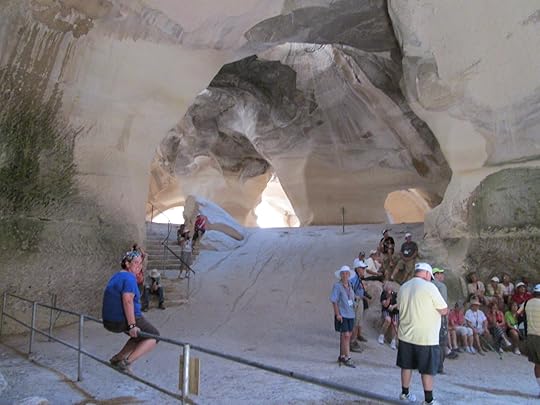 The Guvrin Valley leading from Gaza to Hebron was one of the region's most important trade routes. Joshua fought many battles in this valley, King Rehoboam made Maresha into a fortress and later Micah the prophet preached in the area. After Israel fell to Nebuchadnezzar many Edomites migrated to Guvrin Valley and made it a second homeland which was later called Idumea. King Herod of the New Testament ties to this region.
The Guvrin Valley leading from Gaza to Hebron was one of the region's most important trade routes. Joshua fought many battles in this valley, King Rehoboam made Maresha into a fortress and later Micah the prophet preached in the area. After Israel fell to Nebuchadnezzar many Edomites migrated to Guvrin Valley and made it a second homeland which was later called Idumea. King Herod of the New Testament ties to this region.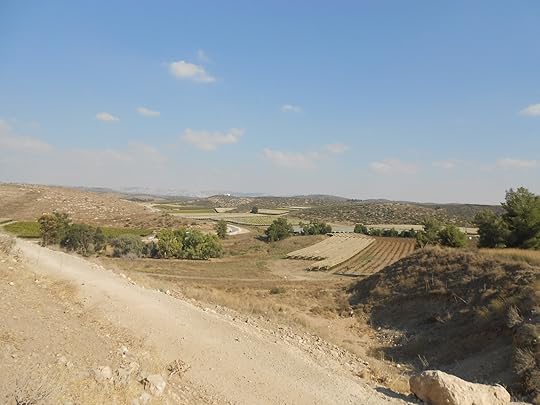 Lachish sits to the south of the Gurvin Valley and protects a secondary road from Gaza througt the Shephlah. The city was a major communication center which served as a beacon which sent signals to Azekah and other hilltop locations. Because of its importance it was made into a royal city for Rehoboam and was later conquered by Nebuchadnezzar on his way to Jerusalem.
Lachish sits to the south of the Gurvin Valley and protects a secondary road from Gaza througt the Shephlah. The city was a major communication center which served as a beacon which sent signals to Azekah and other hilltop locations. Because of its importance it was made into a royal city for Rehoboam and was later conquered by Nebuchadnezzar on his way to Jerusalem.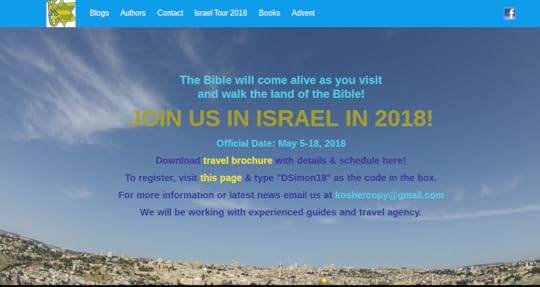
On a tour of Israel in May 2018 we will take a day to experience sites within the Shephliah and tell stories out of Israel’s past. Please take time to sign up to travel with us.
 The word שְׁפֵלָה, Shephlah, sephela, saphela or shefla comes from the word low, and thus indicates low or sinking lands. This unique landform exists from the east of Tel Aviv and the Plain of Sharon and ends north of the Negev. The Shephlah rises from the coastal plain to the Judean highlands. The rumpled land of this area contains low hills and valleys between the hills.
The word שְׁפֵלָה, Shephlah, sephela, saphela or shefla comes from the word low, and thus indicates low or sinking lands. This unique landform exists from the east of Tel Aviv and the Plain of Sharon and ends north of the Negev. The Shephlah rises from the coastal plain to the Judean highlands. The rumpled land of this area contains low hills and valleys between the hills. Throughout the history of the promised land people have traversed the valleys in order to reach the central highlands. Today the roads of Israel continue to follow the Ayalon Valley, Sorek Valley, Elah Valley, Beth Gurvin Valley and the Lachish Valley. We will visit sites in each of the five major routes on our the third day of our 14 day trip to the Holy Land.
Throughout the history of the promised land people have traversed the valleys in order to reach the central highlands. Today the roads of Israel continue to follow the Ayalon Valley, Sorek Valley, Elah Valley, Beth Gurvin Valley and the Lachish Valley. We will visit sites in each of the five major routes on our the third day of our 14 day trip to the Holy Land. At the head of each of the valleys there is a high hill upon which a fortified city has been built. At the head of the Ayalon Valley this is the city of Gezer. At the top of the road are the towns of Yalu and Emmaus. The road runs from Jaffa across the coastal plain, up the Ayalon Valley and the Beit Horon ascent to Jerusalem. The route is still popular today with Israel Highway 1 using this route from Jerusalem past Ben Gurion Airport to Jaffa.
At the head of each of the valleys there is a high hill upon which a fortified city has been built. At the head of the Ayalon Valley this is the city of Gezer. At the top of the road are the towns of Yalu and Emmaus. The road runs from Jaffa across the coastal plain, up the Ayalon Valley and the Beit Horon ascent to Jerusalem. The route is still popular today with Israel Highway 1 using this route from Jerusalem past Ben Gurion Airport to Jaffa. The Ayalon Valley is a place of much history. This is the place where the sun stood still during Joshua’s conquest of the land. The Amarna letters written to Pharaohs Akhenaten and Tutankhamun menton the town of Ayalon. Pharaoh Sheshonk I attacked the Amorites in this area in the 10th century BC. King Saul and the Maccabees also fought in this valley. The state of Israel fought several major battles for the Ayalon Valley in the twentieth century.
The Ayalon Valley is a place of much history. This is the place where the sun stood still during Joshua’s conquest of the land. The Amarna letters written to Pharaohs Akhenaten and Tutankhamun menton the town of Ayalon. Pharaoh Sheshonk I attacked the Amorites in this area in the 10th century BC. King Saul and the Maccabees also fought in this valley. The state of Israel fought several major battles for the Ayalon Valley in the twentieth century. The Sorek Valley extends from Ekron on the coastal plain to Eshtol at the top of the valley. The town of Beit Shemesh (recorded in 1 Samuel 6) is in at a junction where the valley narrows. The Sorek Valley was home to Samson and Delilah. The main road to Jerusalem ran through this valley in the early nineteenth century. The railroad from Jaffa to Jerusalem still runs through the Sorek Valley.
The Sorek Valley extends from Ekron on the coastal plain to Eshtol at the top of the valley. The town of Beit Shemesh (recorded in 1 Samuel 6) is in at a junction where the valley narrows. The Sorek Valley was home to Samson and Delilah. The main road to Jerusalem ran through this valley in the early nineteenth century. The railroad from Jaffa to Jerusalem still runs through the Sorek Valley. The Elah or terebinth Valley is a known for its many oak trees and great fertility. The lower end of the valley is protected by the fortress town of Gath, which is also the hometown of Goliath. The valley runs past Azekah and Socoh to Adullam. David fought Goliath in this valley, picking up five smooth stones from Elah creek. We will visit Khirbet Qeiyafa while in visiting Elah Valley.
The Elah or terebinth Valley is a known for its many oak trees and great fertility. The lower end of the valley is protected by the fortress town of Gath, which is also the hometown of Goliath. The valley runs past Azekah and Socoh to Adullam. David fought Goliath in this valley, picking up five smooth stones from Elah creek. We will visit Khirbet Qeiyafa while in visiting Elah Valley. The Guvrin Valley leading from Gaza to Hebron was one of the region's most important trade routes. Joshua fought many battles in this valley, King Rehoboam made Maresha into a fortress and later Micah the prophet preached in the area. After Israel fell to Nebuchadnezzar many Edomites migrated to Guvrin Valley and made it a second homeland which was later called Idumea. King Herod of the New Testament ties to this region.
The Guvrin Valley leading from Gaza to Hebron was one of the region's most important trade routes. Joshua fought many battles in this valley, King Rehoboam made Maresha into a fortress and later Micah the prophet preached in the area. After Israel fell to Nebuchadnezzar many Edomites migrated to Guvrin Valley and made it a second homeland which was later called Idumea. King Herod of the New Testament ties to this region. Lachish sits to the south of the Gurvin Valley and protects a secondary road from Gaza througt the Shephlah. The city was a major communication center which served as a beacon which sent signals to Azekah and other hilltop locations. Because of its importance it was made into a royal city for Rehoboam and was later conquered by Nebuchadnezzar on his way to Jerusalem.
Lachish sits to the south of the Gurvin Valley and protects a secondary road from Gaza througt the Shephlah. The city was a major communication center which served as a beacon which sent signals to Azekah and other hilltop locations. Because of its importance it was made into a royal city for Rehoboam and was later conquered by Nebuchadnezzar on his way to Jerusalem.
On a tour of Israel in May 2018 we will take a day to experience sites within the Shephliah and tell stories out of Israel’s past. Please take time to sign up to travel with us.
Published on March 08, 2017 03:30
March 3, 2017
Ancient Gezer
Many of the events recorded in the Bible took place in Israel. Not only the Bible, but many other layers of history reside in the same areas of Israel. Archaeologists have dug for a long time, but really have only scratched the surface of what exists to be uncovered.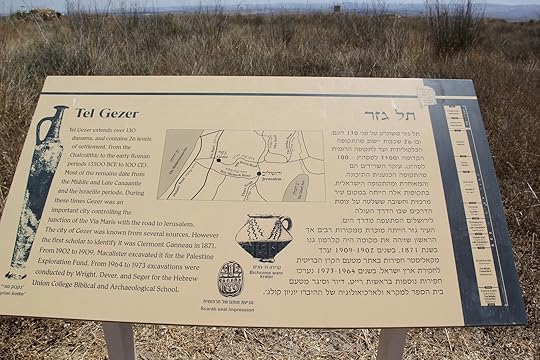 Signs document the importance of GezerTel Gezer is a location that was extremely important in Biblical times, because of its prime trade location along the Via Maris. People would have traveled through this ancient Canaanite city regularly, and there was also a lot of protection due to other people who wanted the land. Gezer was given as a gift by Solomon to his Egyptian wife, among other Biblical references.
Signs document the importance of GezerTel Gezer is a location that was extremely important in Biblical times, because of its prime trade location along the Via Maris. People would have traveled through this ancient Canaanite city regularly, and there was also a lot of protection due to other people who wanted the land. Gezer was given as a gift by Solomon to his Egyptian wife, among other Biblical references.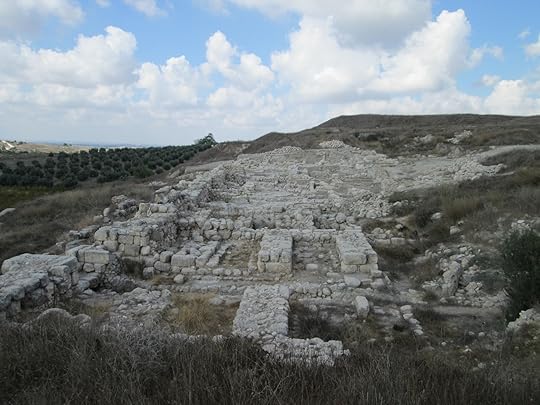 Solomon's gates and palace at Tel GezerNew Orleans Baptist Theological Seminary is one of a few schools that dig at the site. NOBTS began digging in 2007 in the gigantic water system, which is still a mystery. To help solve this mystery, the neighboring locations of a house (called "Eli's house") and a Canaanite gate are also being excavated.
Solomon's gates and palace at Tel GezerNew Orleans Baptist Theological Seminary is one of a few schools that dig at the site. NOBTS began digging in 2007 in the gigantic water system, which is still a mystery. To help solve this mystery, the neighboring locations of a house (called "Eli's house") and a Canaanite gate are also being excavated.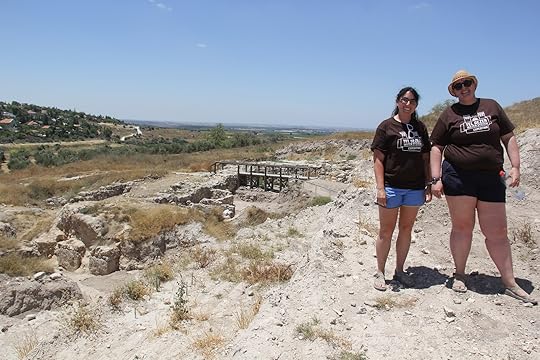 Overlooking Eli's House and the Canaanite Gate at Tel GezerThe water system is enormous and a special crane is used to lift bags of dirt out of the bottom.
Overlooking Eli's House and the Canaanite Gate at Tel GezerThe water system is enormous and a special crane is used to lift bags of dirt out of the bottom.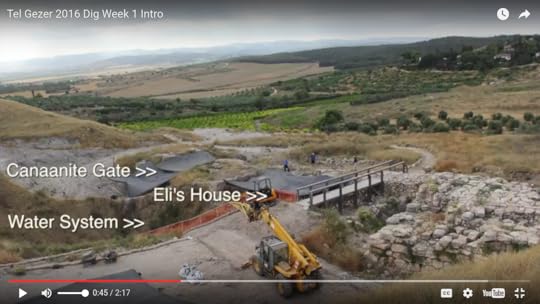 NOBTS Dig sites from the video on their websiteThis video will take you on a tour of the tunnel. Take a quick walk down, look around and come back up.
NOBTS Dig sites from the video on their websiteThis video will take you on a tour of the tunnel. Take a quick walk down, look around and come back up. 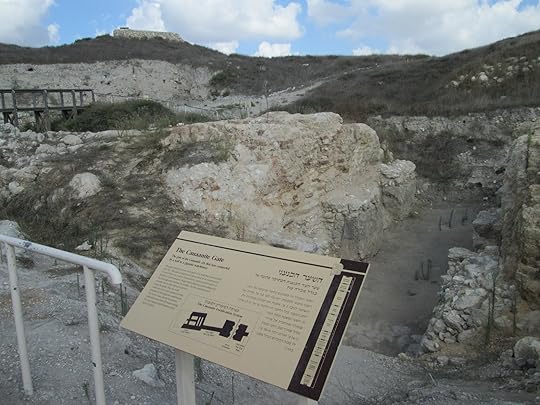 The Canaanite Gate at Tel GezerEli's house has the tallest walls of any unearthed in Israel (that haven't been reconstructed) and is also the location where some really exciting finds came from this past summer.
The Canaanite Gate at Tel GezerEli's house has the tallest walls of any unearthed in Israel (that haven't been reconstructed) and is also the location where some really exciting finds came from this past summer.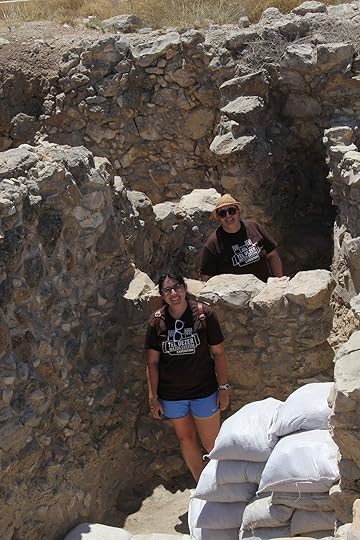 The tall walls at Eli's House in Tel GezerMany articles have been written about the exciting finds this past summer. Here is one article.
The tall walls at Eli's House in Tel GezerMany articles have been written about the exciting finds this past summer. Here is one article.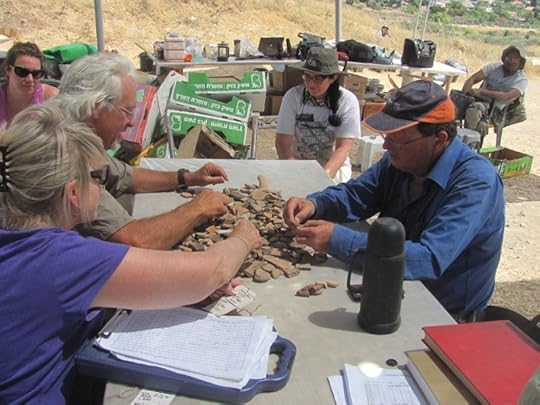 Pottery investigations at Tel GezerThe Canaanite gate was excavated by R.A.S. MacAllister in the early 1900s, who left "fill" that had to be removed until new layers were found underneath that have not been excavated yet. This coming summer, it will be exciting to see what is uncovered there!
Pottery investigations at Tel GezerThe Canaanite gate was excavated by R.A.S. MacAllister in the early 1900s, who left "fill" that had to be removed until new layers were found underneath that have not been excavated yet. This coming summer, it will be exciting to see what is uncovered there!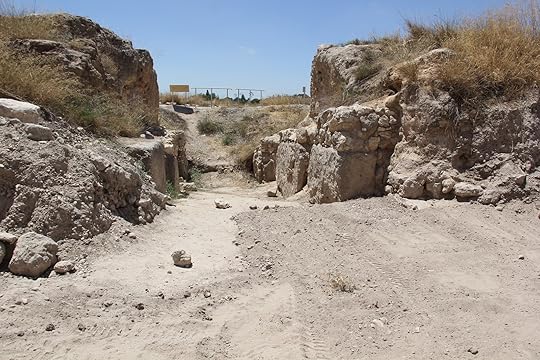 The Canaanite Gate at Tel GezerTo see and read more about the finds from this summer, visit the New Orleans Baptist Theological Seminary Archeology website.
The Canaanite Gate at Tel GezerTo see and read more about the finds from this summer, visit the New Orleans Baptist Theological Seminary Archeology website.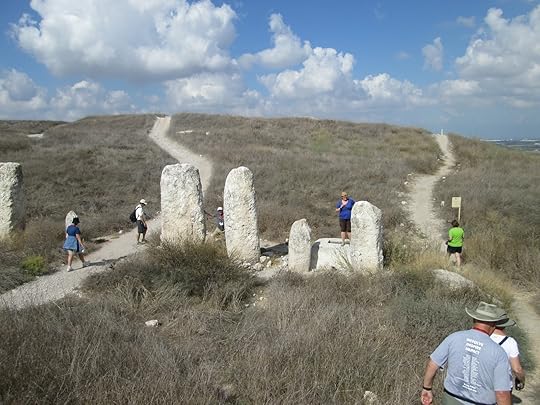 Monoliths at Tel GezerYou can also watch this 15-minute mini-documentary with interviews and footage of the dig
Monoliths at Tel GezerYou can also watch this 15-minute mini-documentary with interviews and footage of the dig
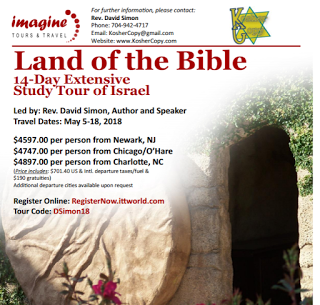 Join us on our May 2018 Tour of Israel
Join us on our May 2018 Tour of Israel
Get an insiders look at Tel Gezer and other sitesMany thanks to my daughter Sarah Simon who wrote this blog. Sarah dug and made videos of the dig last Summer, and will return again this year. Sarah and I invite you to visit Gezer on our May 2018 Israel Tour. To join us, click this link.
 Signs document the importance of GezerTel Gezer is a location that was extremely important in Biblical times, because of its prime trade location along the Via Maris. People would have traveled through this ancient Canaanite city regularly, and there was also a lot of protection due to other people who wanted the land. Gezer was given as a gift by Solomon to his Egyptian wife, among other Biblical references.
Signs document the importance of GezerTel Gezer is a location that was extremely important in Biblical times, because of its prime trade location along the Via Maris. People would have traveled through this ancient Canaanite city regularly, and there was also a lot of protection due to other people who wanted the land. Gezer was given as a gift by Solomon to his Egyptian wife, among other Biblical references. Solomon's gates and palace at Tel GezerNew Orleans Baptist Theological Seminary is one of a few schools that dig at the site. NOBTS began digging in 2007 in the gigantic water system, which is still a mystery. To help solve this mystery, the neighboring locations of a house (called "Eli's house") and a Canaanite gate are also being excavated.
Solomon's gates and palace at Tel GezerNew Orleans Baptist Theological Seminary is one of a few schools that dig at the site. NOBTS began digging in 2007 in the gigantic water system, which is still a mystery. To help solve this mystery, the neighboring locations of a house (called "Eli's house") and a Canaanite gate are also being excavated. Overlooking Eli's House and the Canaanite Gate at Tel GezerThe water system is enormous and a special crane is used to lift bags of dirt out of the bottom.
Overlooking Eli's House and the Canaanite Gate at Tel GezerThe water system is enormous and a special crane is used to lift bags of dirt out of the bottom. NOBTS Dig sites from the video on their websiteThis video will take you on a tour of the tunnel. Take a quick walk down, look around and come back up.
NOBTS Dig sites from the video on their websiteThis video will take you on a tour of the tunnel. Take a quick walk down, look around and come back up.  The Canaanite Gate at Tel GezerEli's house has the tallest walls of any unearthed in Israel (that haven't been reconstructed) and is also the location where some really exciting finds came from this past summer.
The Canaanite Gate at Tel GezerEli's house has the tallest walls of any unearthed in Israel (that haven't been reconstructed) and is also the location where some really exciting finds came from this past summer. The tall walls at Eli's House in Tel GezerMany articles have been written about the exciting finds this past summer. Here is one article.
The tall walls at Eli's House in Tel GezerMany articles have been written about the exciting finds this past summer. Here is one article. Pottery investigations at Tel GezerThe Canaanite gate was excavated by R.A.S. MacAllister in the early 1900s, who left "fill" that had to be removed until new layers were found underneath that have not been excavated yet. This coming summer, it will be exciting to see what is uncovered there!
Pottery investigations at Tel GezerThe Canaanite gate was excavated by R.A.S. MacAllister in the early 1900s, who left "fill" that had to be removed until new layers were found underneath that have not been excavated yet. This coming summer, it will be exciting to see what is uncovered there! The Canaanite Gate at Tel GezerTo see and read more about the finds from this summer, visit the New Orleans Baptist Theological Seminary Archeology website.
The Canaanite Gate at Tel GezerTo see and read more about the finds from this summer, visit the New Orleans Baptist Theological Seminary Archeology website. Monoliths at Tel GezerYou can also watch this 15-minute mini-documentary with interviews and footage of the dig
Monoliths at Tel GezerYou can also watch this 15-minute mini-documentary with interviews and footage of the dig
 Join us on our May 2018 Tour of Israel
Join us on our May 2018 Tour of IsraelGet an insiders look at Tel Gezer and other sitesMany thanks to my daughter Sarah Simon who wrote this blog. Sarah dug and made videos of the dig last Summer, and will return again this year. Sarah and I invite you to visit Gezer on our May 2018 Israel Tour. To join us, click this link.
Published on March 03, 2017 09:00
March 2, 2017
Philadelphia and a Jewish Cemetery
Recent news of vandalism in Jewish cemeteries, bomb threats at Jewish schools and spray painting signs called my attention to family. These events have hit too close to home. Signs at my daughter's school were spray painted and tombstones were overturned in the cemetery around the corner from where my family is buried.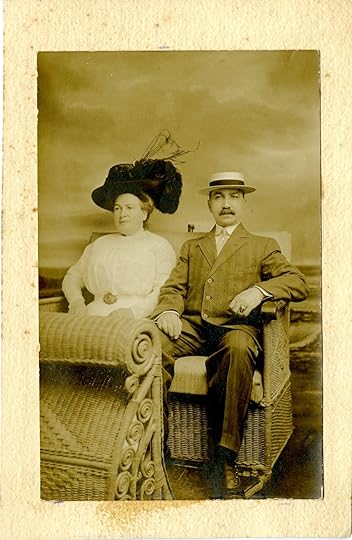 David & Amelia Wolf LevineI have never understood people who feel they must tear up things that are not theirs (and do not matter to them). I am repulsed by those who prey on little children (schools) or people weaker than themselves, and the insanity that drives perpetrators to make these attacks anonymously . I am completely confused when individuals target burial grounds in order to wound people they do not even know. If such people would put their minds into action they would realize that in all probability their lives at some point benefited by the philanthropy or gifts of the very Jewish people they have targeted.
David & Amelia Wolf LevineI have never understood people who feel they must tear up things that are not theirs (and do not matter to them). I am repulsed by those who prey on little children (schools) or people weaker than themselves, and the insanity that drives perpetrators to make these attacks anonymously . I am completely confused when individuals target burial grounds in order to wound people they do not even know. If such people would put their minds into action they would realize that in all probability their lives at some point benefited by the philanthropy or gifts of the very Jewish people they have targeted.
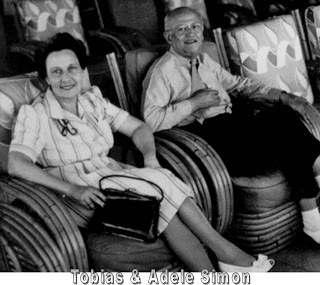 My Grandparents
My Grandparents
Although I never met David Levine, I would like to learn more about him. I am named after him. In Jewish life it is bad luck to be named after a living relative; David Levine died about a year before I was born. I did know his daughters, especially Adele, my grandmother. I spent many happy weekends at her home in Miami Beach.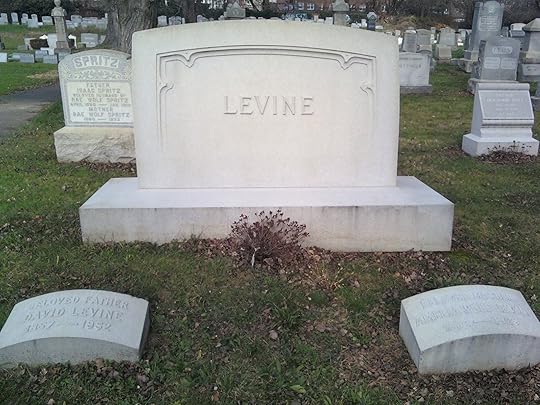 David & Amelia Levine. Her sister Rachel Spitz is on next rowA few years ago I was in Philadelphia, thought about my ancestors who lived there and visited their graves. These family members were important to my past, and although I did not know the people buried in Philadelphia, they contributed to my life.
David & Amelia Levine. Her sister Rachel Spitz is on next rowA few years ago I was in Philadelphia, thought about my ancestors who lived there and visited their graves. These family members were important to my past, and although I did not know the people buried in Philadelphia, they contributed to my life.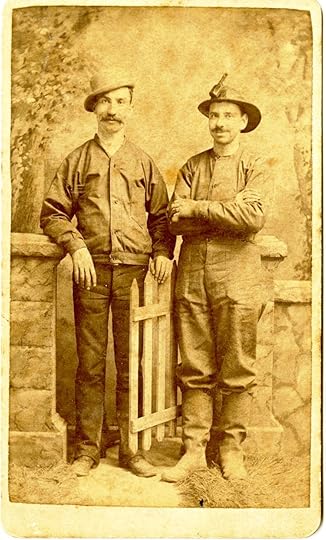 David Levine and Philip WolfI am named after my great grandfather, David Levine. David immigrated to the United States at the age of fifteen in 1875. His brother was supposed to meet him at the boat, but failed to appear. My great grandfather entered this country without family connections, and probably without knowing the English language. But he survived.
David Levine and Philip WolfI am named after my great grandfather, David Levine. David immigrated to the United States at the age of fifteen in 1875. His brother was supposed to meet him at the boat, but failed to appear. My great grandfather entered this country without family connections, and probably without knowing the English language. But he survived.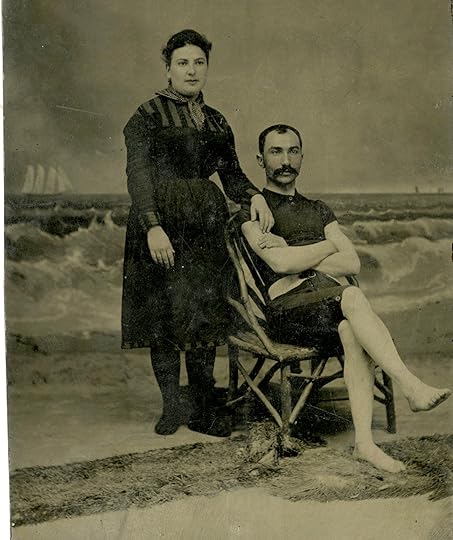 David & Amelia Levine in Atlantic CityI do not know what his early years were like, either in Kalvarija or in Philadelphia. His parents might have been bakers, because he tested bread to make sure it was fresh. In the United States he worked in the garment industry. In 1880 he is listed as a clothier living in Girardville, Pennsylvania. In 1886 he married Amelia Wolf, the daughter of a clothier. And by 1892 he was operating a clothing store in Shenandoah, Pennsylvania.
David & Amelia Levine in Atlantic CityI do not know what his early years were like, either in Kalvarija or in Philadelphia. His parents might have been bakers, because he tested bread to make sure it was fresh. In the United States he worked in the garment industry. In 1880 he is listed as a clothier living in Girardville, Pennsylvania. In 1886 he married Amelia Wolf, the daughter of a clothier. And by 1892 he was operating a clothing store in Shenandoah, Pennsylvania.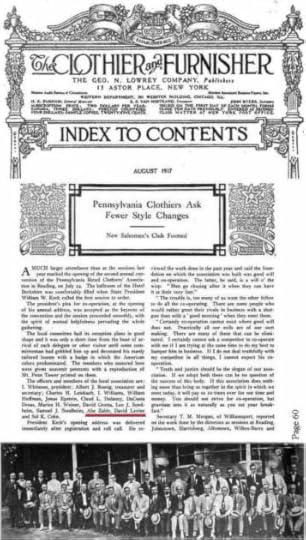 Magazine listing names of my relativesDavid Levine, his brother-in-law Abe Zable, his father-in-law Adolf Wolf, and many members of the Wolf family owned clothing stores. Early circulars, magazines and trade journals list his name and show he was a leader in the industry. David was also a leader in his community, holding civic offices and giving money to worthwhile causes. He was also active in Jewish life, attending Synagogue on a regular basis in the communities where he lived.
Magazine listing names of my relativesDavid Levine, his brother-in-law Abe Zable, his father-in-law Adolf Wolf, and many members of the Wolf family owned clothing stores. Early circulars, magazines and trade journals list his name and show he was a leader in the industry. David was also a leader in his community, holding civic offices and giving money to worthwhile causes. He was also active in Jewish life, attending Synagogue on a regular basis in the communities where he lived.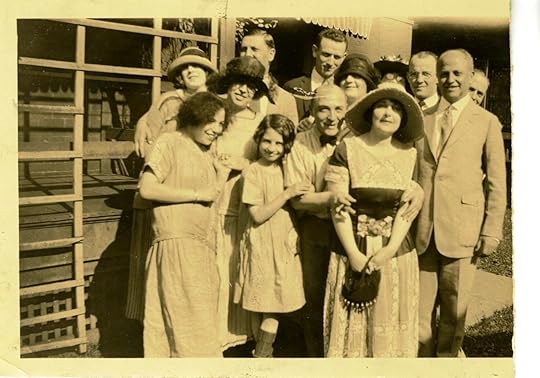 Tobias Simon clothing store in McKeesport, PAA few years ago, on my visit to Philadelphia, I visited Adath Jeshurun Cemetery to find his grave. In the process I met the caretaker for the cemetery. The man shared that the graveyard is full. Funding is down, so the caretaker (at that time) gave much of his time as a gift of love (rather than being paid). This makes my heart break when I think it could have been his cemetery vandalized.
Tobias Simon clothing store in McKeesport, PAA few years ago, on my visit to Philadelphia, I visited Adath Jeshurun Cemetery to find his grave. In the process I met the caretaker for the cemetery. The man shared that the graveyard is full. Funding is down, so the caretaker (at that time) gave much of his time as a gift of love (rather than being paid). This makes my heart break when I think it could have been his cemetery vandalized.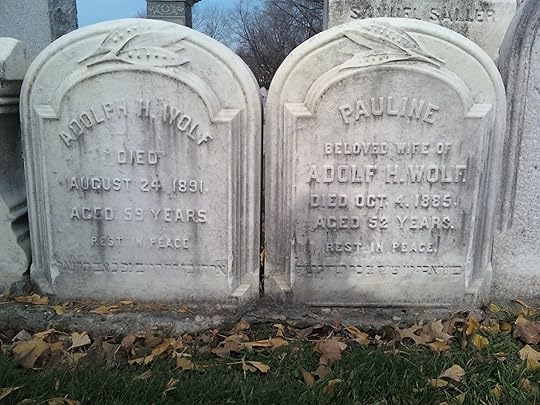 Amelia Levine's Parents - Adolph & Pauline Wolf
Amelia Levine's Parents - Adolph & Pauline Wolf
On my visit I found not only David and Amelia Levine, but also a host of other family members from the Wolf and Spitz lines of the family. It was a tour of my family’s heritage and a lesson that immigrants can thrive in the United States, and contribute to our country. In fact immigrants who are working hard to survive are the very people who have made our country great.
 David & Amelia Wolf LevineI have never understood people who feel they must tear up things that are not theirs (and do not matter to them). I am repulsed by those who prey on little children (schools) or people weaker than themselves, and the insanity that drives perpetrators to make these attacks anonymously . I am completely confused when individuals target burial grounds in order to wound people they do not even know. If such people would put their minds into action they would realize that in all probability their lives at some point benefited by the philanthropy or gifts of the very Jewish people they have targeted.
David & Amelia Wolf LevineI have never understood people who feel they must tear up things that are not theirs (and do not matter to them). I am repulsed by those who prey on little children (schools) or people weaker than themselves, and the insanity that drives perpetrators to make these attacks anonymously . I am completely confused when individuals target burial grounds in order to wound people they do not even know. If such people would put their minds into action they would realize that in all probability their lives at some point benefited by the philanthropy or gifts of the very Jewish people they have targeted.
 My Grandparents
My GrandparentsAlthough I never met David Levine, I would like to learn more about him. I am named after him. In Jewish life it is bad luck to be named after a living relative; David Levine died about a year before I was born. I did know his daughters, especially Adele, my grandmother. I spent many happy weekends at her home in Miami Beach.
 David & Amelia Levine. Her sister Rachel Spitz is on next rowA few years ago I was in Philadelphia, thought about my ancestors who lived there and visited their graves. These family members were important to my past, and although I did not know the people buried in Philadelphia, they contributed to my life.
David & Amelia Levine. Her sister Rachel Spitz is on next rowA few years ago I was in Philadelphia, thought about my ancestors who lived there and visited their graves. These family members were important to my past, and although I did not know the people buried in Philadelphia, they contributed to my life. David Levine and Philip WolfI am named after my great grandfather, David Levine. David immigrated to the United States at the age of fifteen in 1875. His brother was supposed to meet him at the boat, but failed to appear. My great grandfather entered this country without family connections, and probably without knowing the English language. But he survived.
David Levine and Philip WolfI am named after my great grandfather, David Levine. David immigrated to the United States at the age of fifteen in 1875. His brother was supposed to meet him at the boat, but failed to appear. My great grandfather entered this country without family connections, and probably without knowing the English language. But he survived. David & Amelia Levine in Atlantic CityI do not know what his early years were like, either in Kalvarija or in Philadelphia. His parents might have been bakers, because he tested bread to make sure it was fresh. In the United States he worked in the garment industry. In 1880 he is listed as a clothier living in Girardville, Pennsylvania. In 1886 he married Amelia Wolf, the daughter of a clothier. And by 1892 he was operating a clothing store in Shenandoah, Pennsylvania.
David & Amelia Levine in Atlantic CityI do not know what his early years were like, either in Kalvarija or in Philadelphia. His parents might have been bakers, because he tested bread to make sure it was fresh. In the United States he worked in the garment industry. In 1880 he is listed as a clothier living in Girardville, Pennsylvania. In 1886 he married Amelia Wolf, the daughter of a clothier. And by 1892 he was operating a clothing store in Shenandoah, Pennsylvania. Magazine listing names of my relativesDavid Levine, his brother-in-law Abe Zable, his father-in-law Adolf Wolf, and many members of the Wolf family owned clothing stores. Early circulars, magazines and trade journals list his name and show he was a leader in the industry. David was also a leader in his community, holding civic offices and giving money to worthwhile causes. He was also active in Jewish life, attending Synagogue on a regular basis in the communities where he lived.
Magazine listing names of my relativesDavid Levine, his brother-in-law Abe Zable, his father-in-law Adolf Wolf, and many members of the Wolf family owned clothing stores. Early circulars, magazines and trade journals list his name and show he was a leader in the industry. David was also a leader in his community, holding civic offices and giving money to worthwhile causes. He was also active in Jewish life, attending Synagogue on a regular basis in the communities where he lived. Tobias Simon clothing store in McKeesport, PAA few years ago, on my visit to Philadelphia, I visited Adath Jeshurun Cemetery to find his grave. In the process I met the caretaker for the cemetery. The man shared that the graveyard is full. Funding is down, so the caretaker (at that time) gave much of his time as a gift of love (rather than being paid). This makes my heart break when I think it could have been his cemetery vandalized.
Tobias Simon clothing store in McKeesport, PAA few years ago, on my visit to Philadelphia, I visited Adath Jeshurun Cemetery to find his grave. In the process I met the caretaker for the cemetery. The man shared that the graveyard is full. Funding is down, so the caretaker (at that time) gave much of his time as a gift of love (rather than being paid). This makes my heart break when I think it could have been his cemetery vandalized. Amelia Levine's Parents - Adolph & Pauline Wolf
Amelia Levine's Parents - Adolph & Pauline WolfOn my visit I found not only David and Amelia Levine, but also a host of other family members from the Wolf and Spitz lines of the family. It was a tour of my family’s heritage and a lesson that immigrants can thrive in the United States, and contribute to our country. In fact immigrants who are working hard to survive are the very people who have made our country great.
Published on March 02, 2017 12:55



